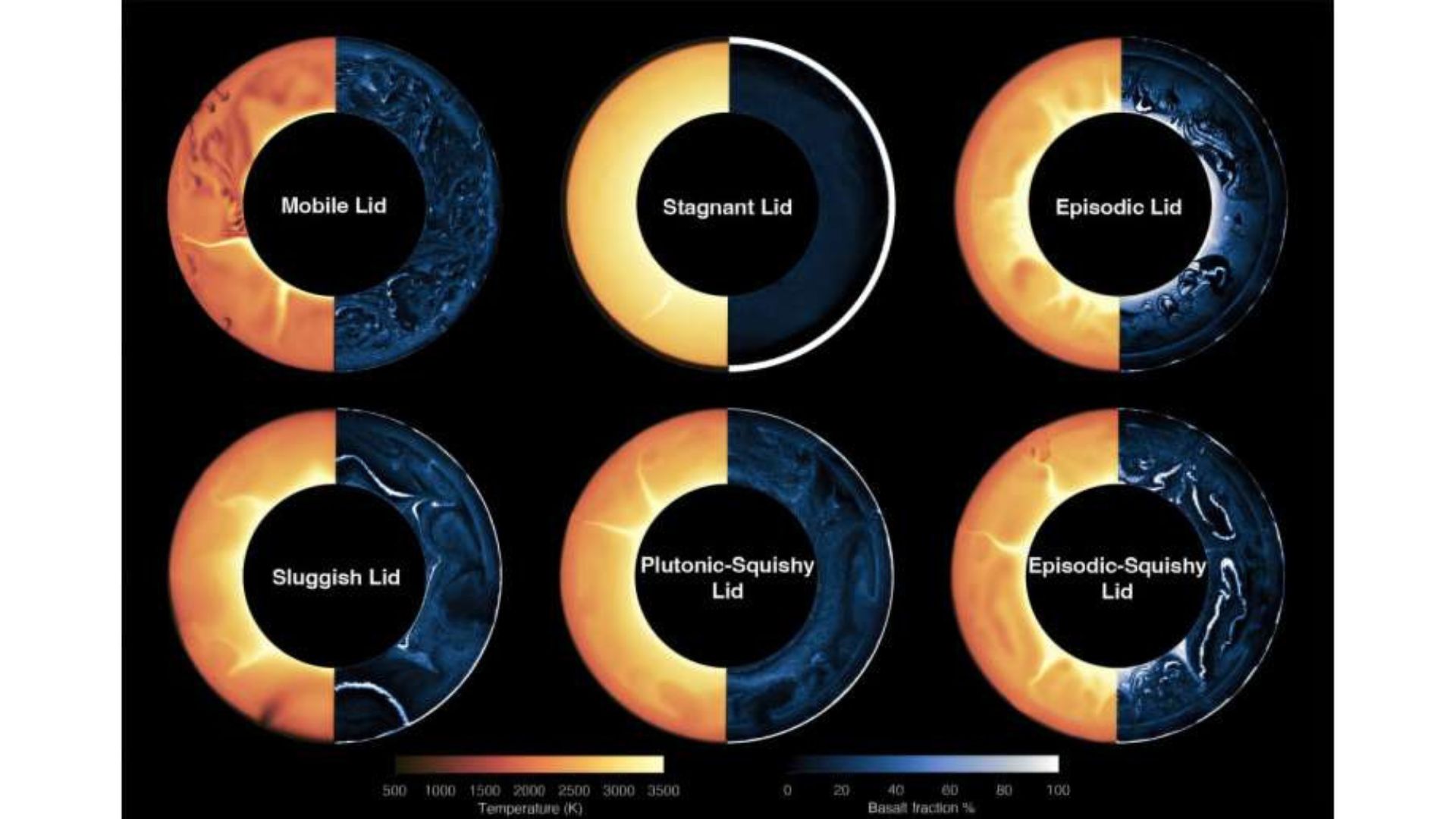Best telescopes for astrophotography in 2025
The best telescopes for professional astrophotography will allow you to capture high-definition images of planets, nebulas and galaxies. Black Friday this week could see prices drop too!
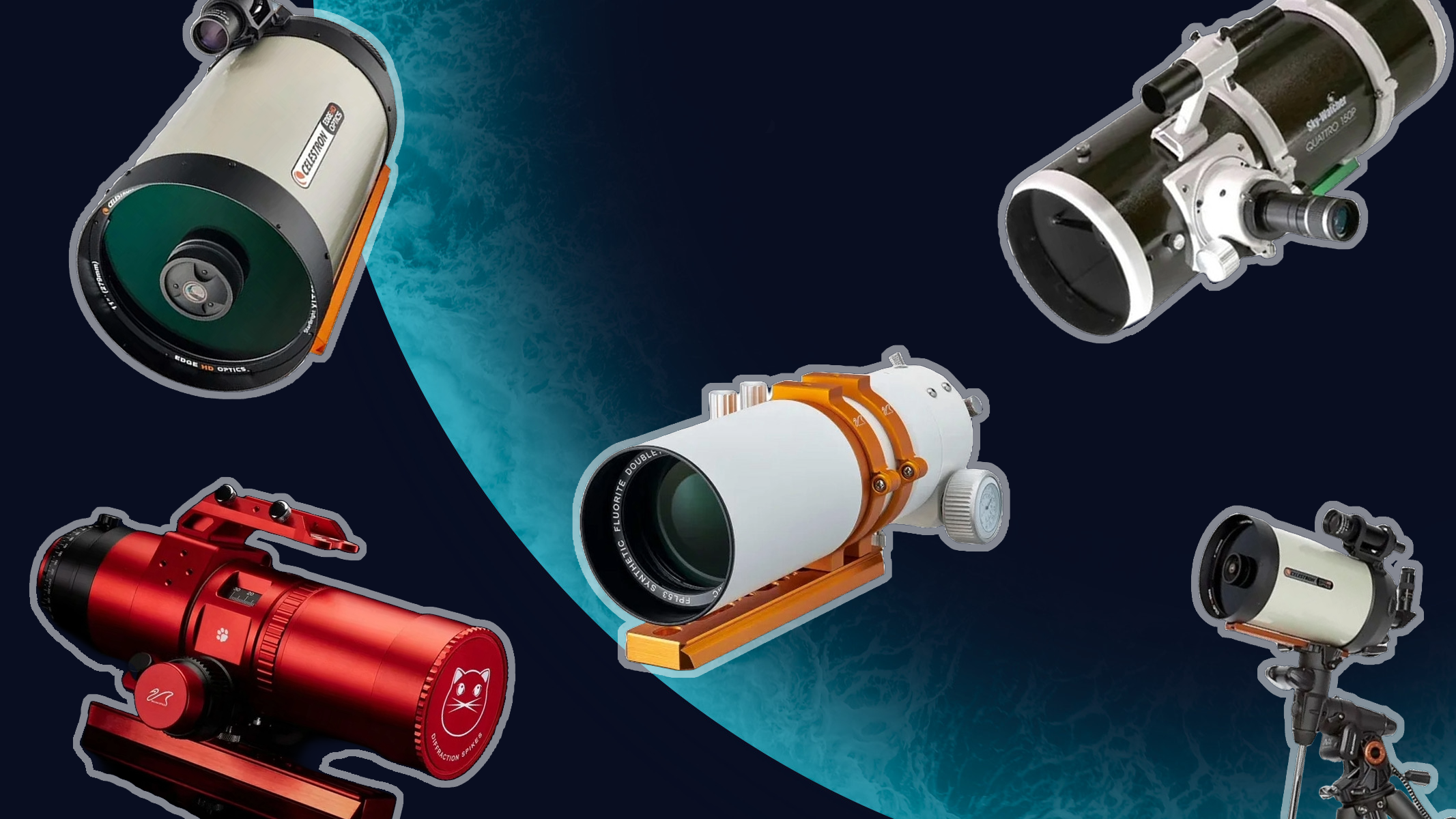
Astrophotography transforms distant celestial wonders into stunning images, and choosing the right telescope is key to success. This guide highlights the best telescopes for astrophotography in 2025, tailored for beginners to seasoned imagers.
We’ve curated a list based on performance, versatility, and value, drawing from company specifications and expert insights. From planetary detail to sprawling nebulas, our selections cover diverse needs. Whether you’re chasing sharp star clusters or vibrant deep-sky objects, our recommendations ensure quality results.
Veteran Astro-imager Damian Peach, our contributing expert, shares why each model excels: “These telescopes balance precision optics with user-friendly features, empowering astrophotographers to capture the universe’s beauty with clarity and ease.”
If imaging isn't your thing, or you just want to take a look at a variety of telescopes before taking the plunge, then be sure to read our full guide to the best telescopes overall. Some smart telescopes offer easy astrophotography ability so you may want to check out our best smart telescopes guide too.
Finally, it's worth mentioning that Black Friday is this week and we will likely see plenty of discounted skywatching equipment then.
The quick list
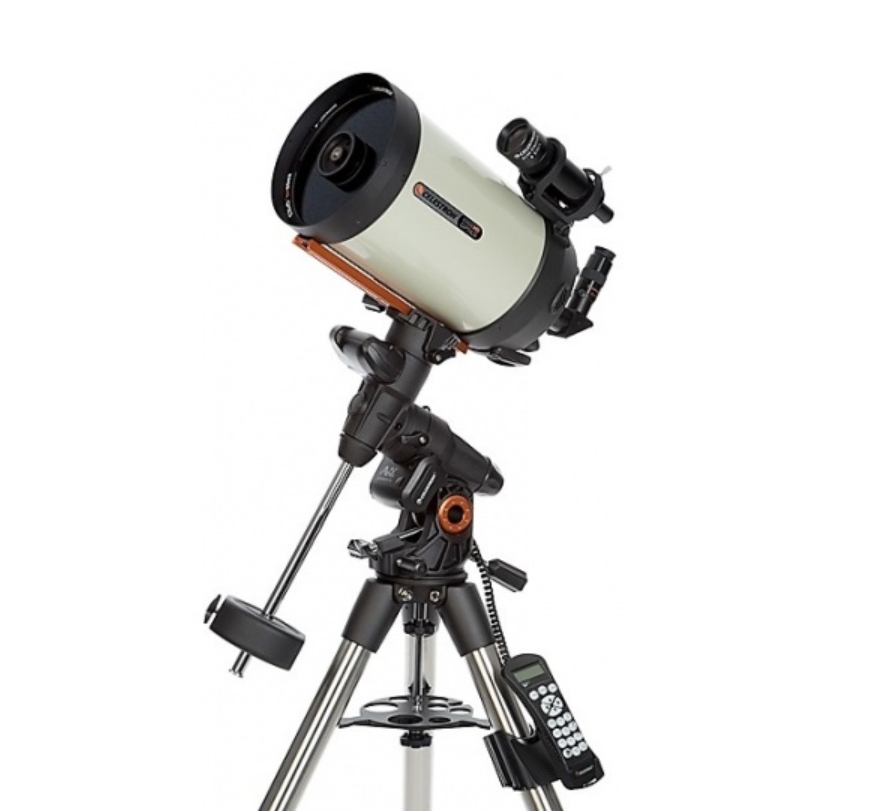
Best overall
Professional-grade imaging with versatile optics and reliable tracking, perfect for serious astrophotographers.
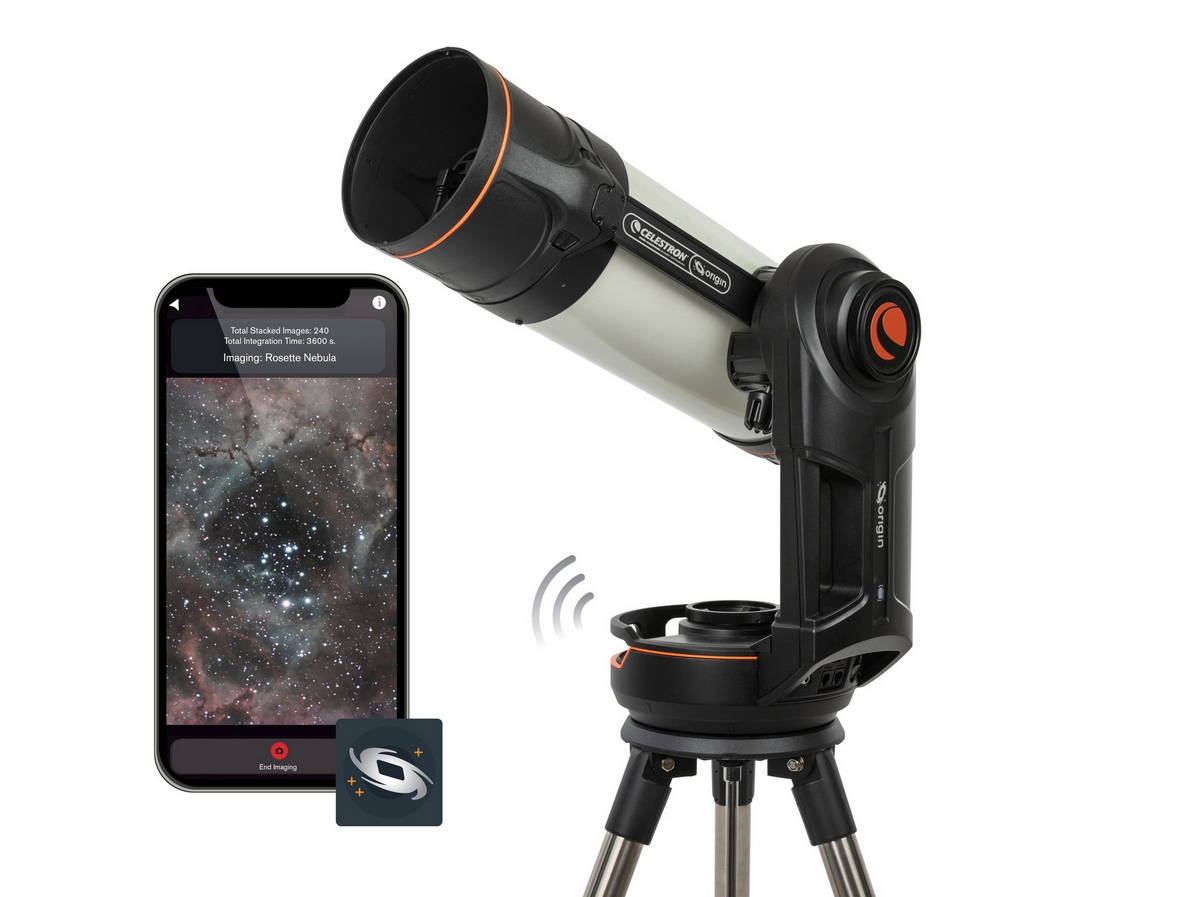
Best smart telescope
Unmatched ease and speed for wide-field astrophotography, perfect for tech-savvy imagers.
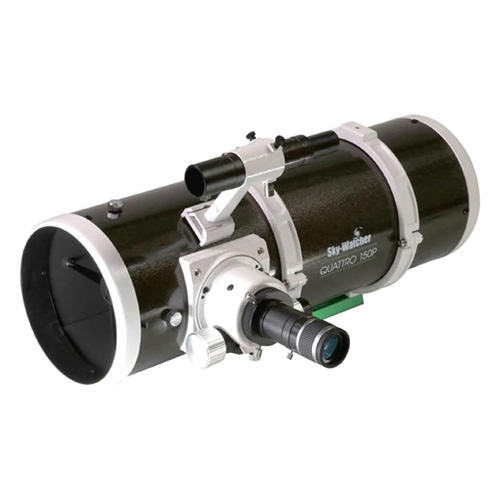
Best classic astro
The Sky-Watcher Quattro 150P offers superb wide-field deep-sky imaging at a budget-friendly price.
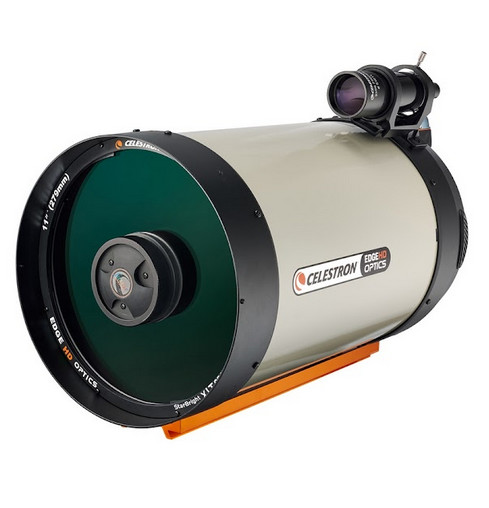
Best for planets
The Celestron C11 EdgeHD excels at capturing stunning planetary and lunar details.
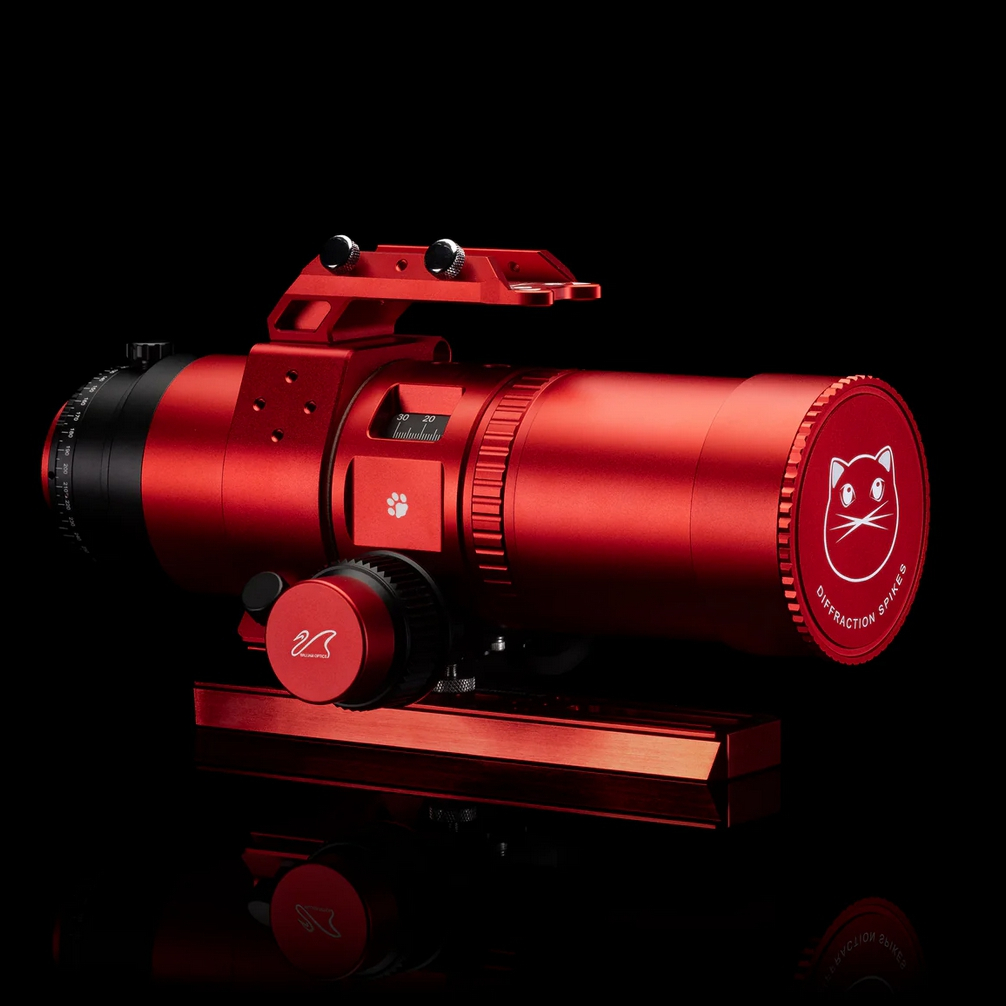
Best for nebulas
The William Optics RedCat 51 delivers stunning wide-field deep sky images with superb portability.
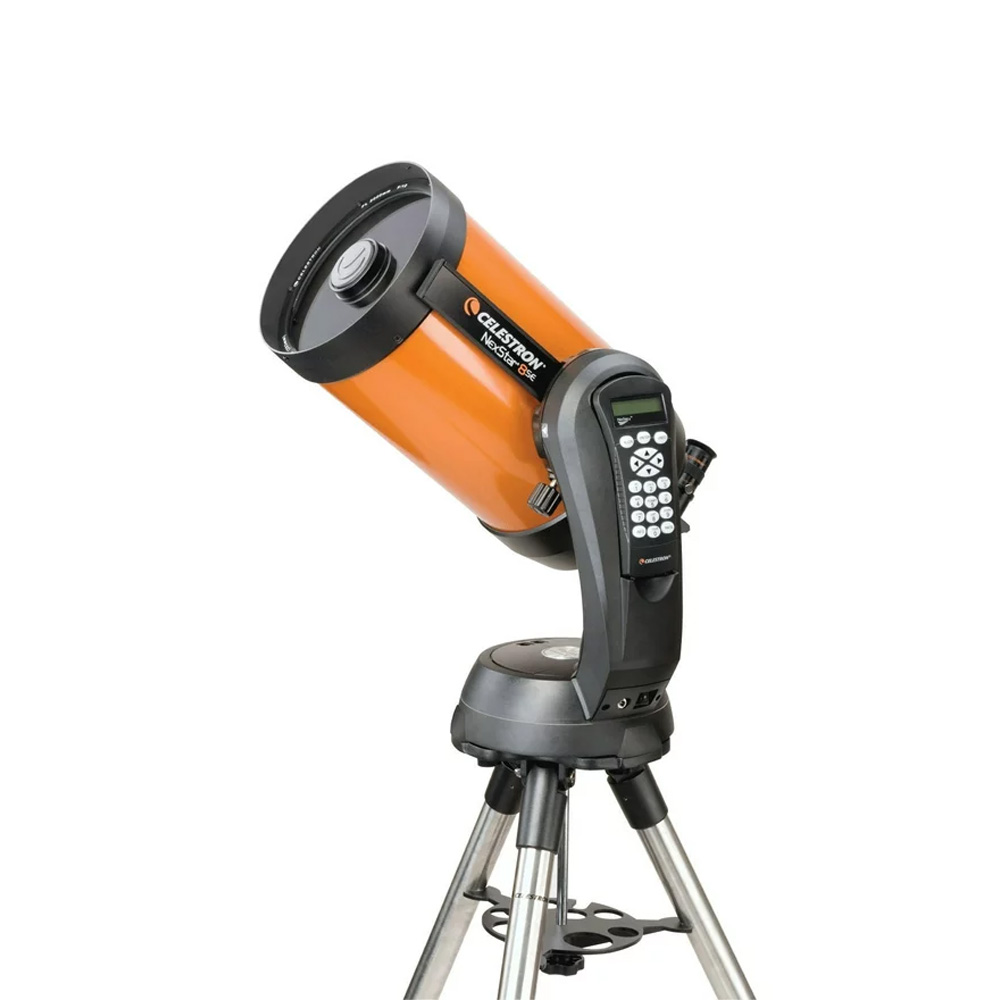
Best for smartphone astrophotography
The Celestron NexStar 8SE simplifies smartphone astrophotography with large aperture and advanced easy to use features.
Load the next product↴
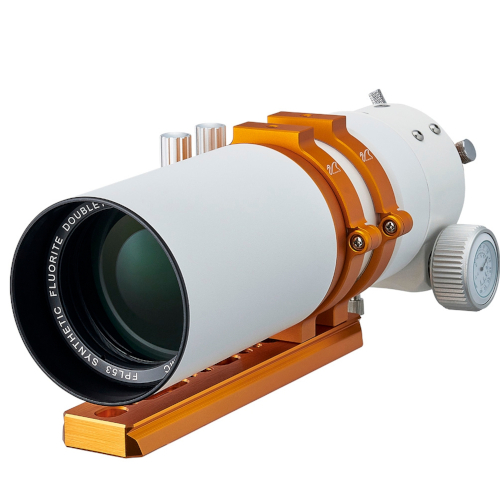
Best for stars
The William Optics ZenithStar 73 excels at sharp, colorful star cluster imaging.
Best telescopes for astrophotography in 2025
Why you can trust Space.com
Best overall
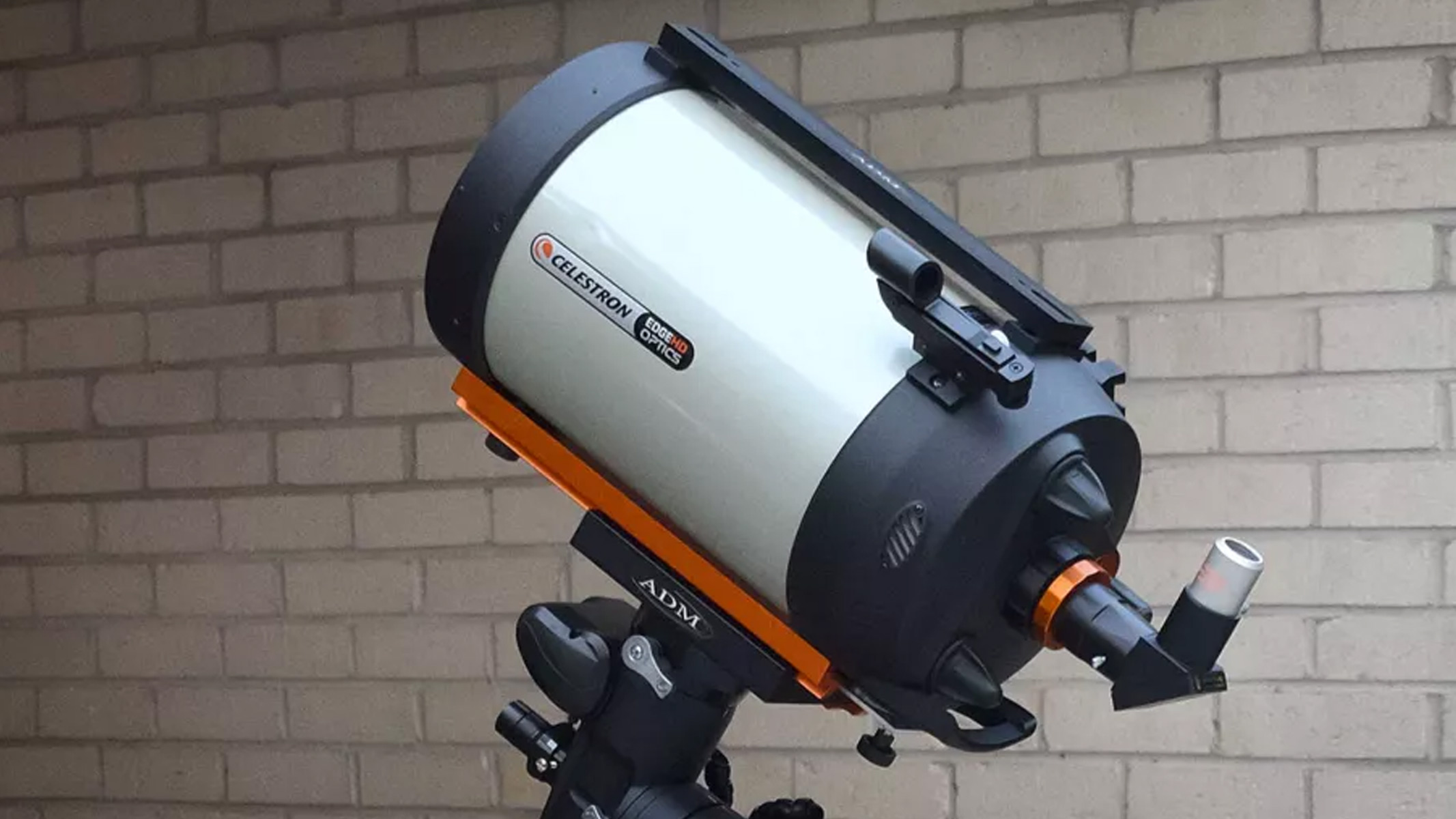
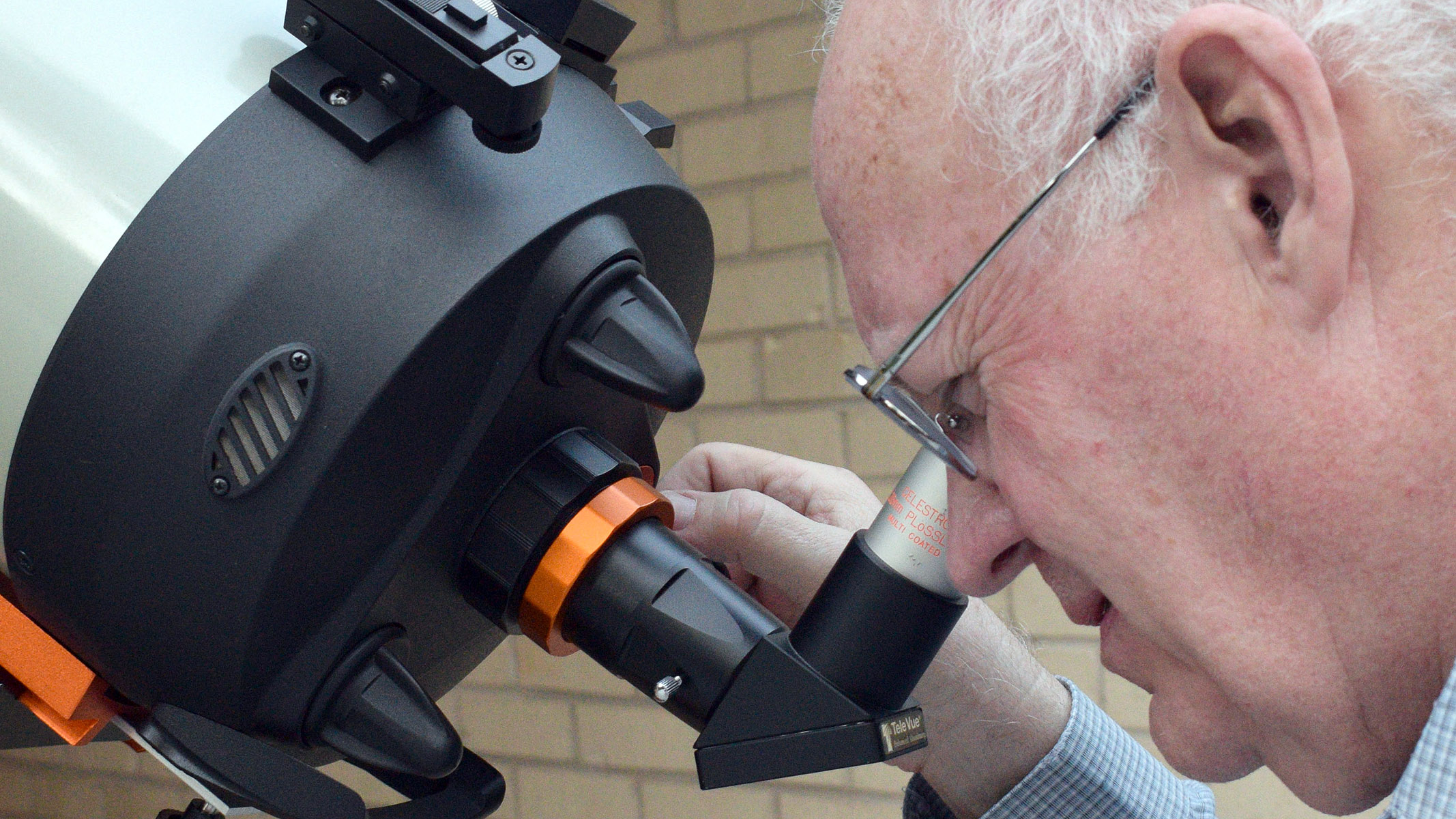
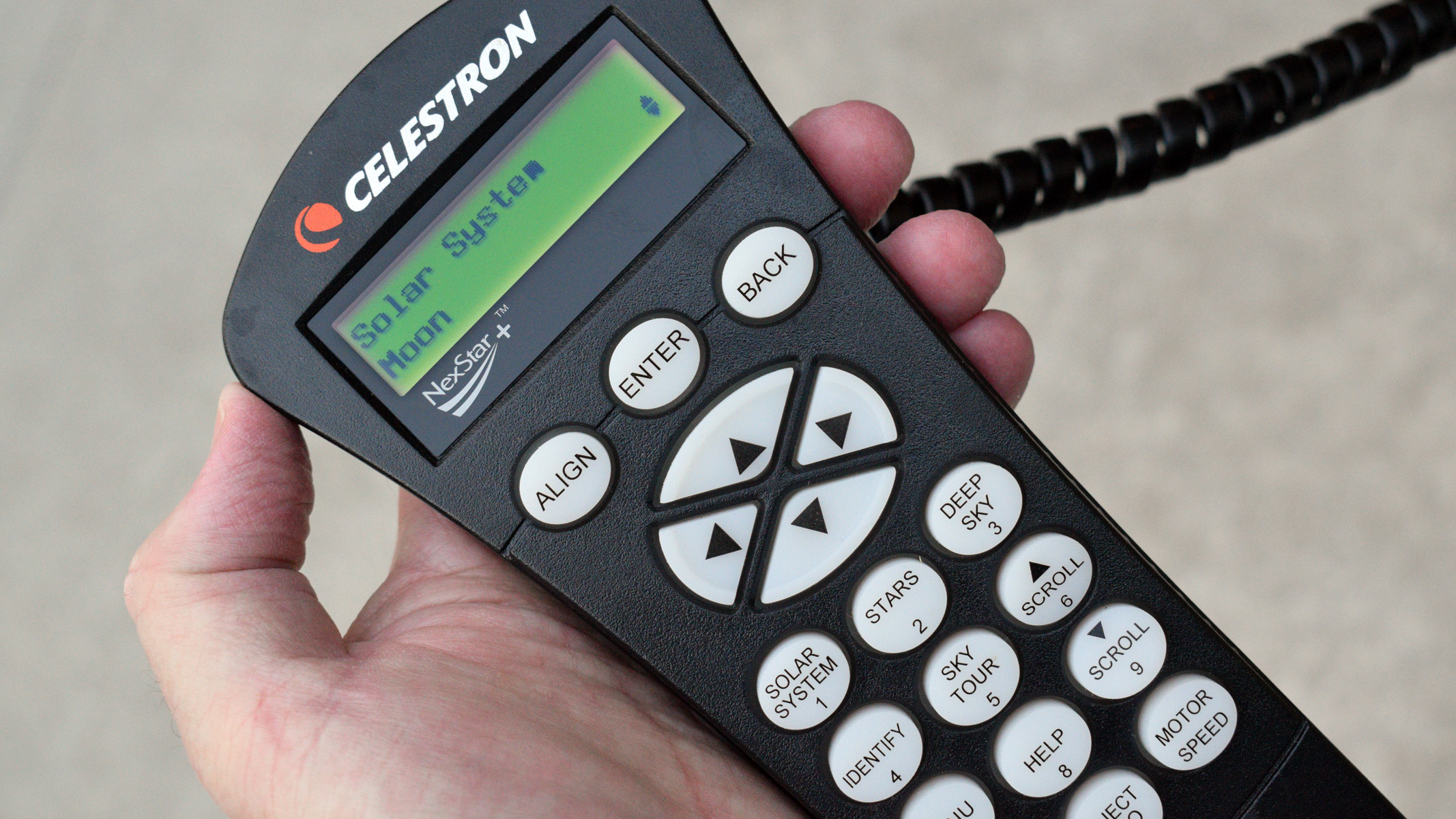
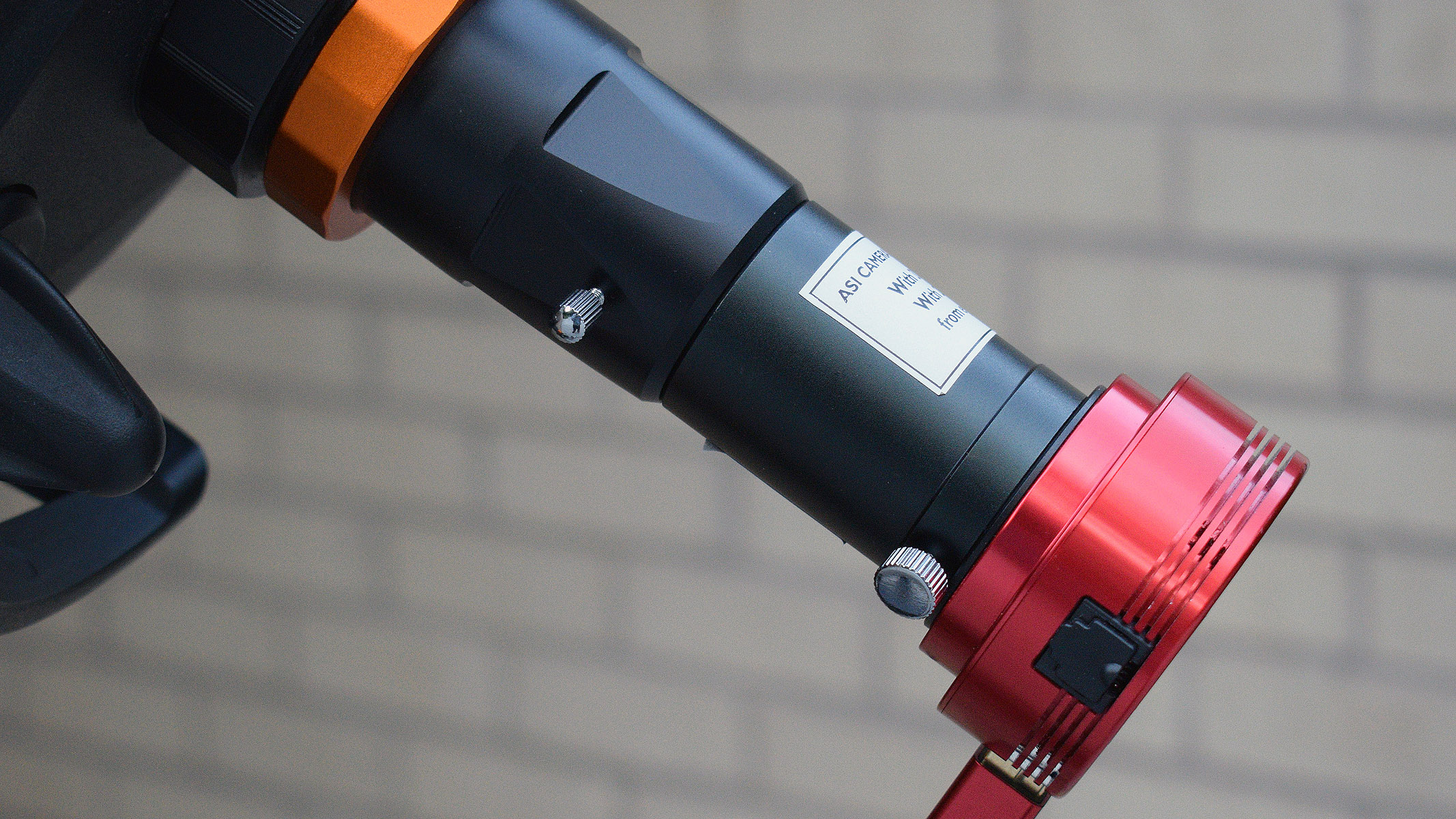
Celestron Advanced VX 8-inch EdgeHD
Our expert review:
Specifications
Reasons to buy
Reasons to avoid
✅ You want a premium telescope for deep-sky and planetary imaging with pinpoint star clarity.
✅ You need a versatile system compatible with multiple focal ratios for varied astrophotography projects.
❌ You need a telescope for high-magnification planetary imaging or visual observing.
❌ You also want to have a telescope you can look through!
🔎 The Celestron Origin offers unmatched ease and speed for wide-field astrophotography, perfect for tech-savvy imagers. ★★★★★
The Celestron Advanced VX 8-inch EdgeHD is a powerhouse for astrophotography, blending advanced optics with a sturdy computerized mount. Its 203.2mm aperture captures ample light, ideal for detailed images of galaxies, nebulas, and planets. The 2032mm focal length at f/10 provides high magnification for small objects, while optional focal reducers (f/7) or Fastar (f/2) configurations broaden its scope for wide-field imaging.
StarBright XLT coatings enhance light transmission to 97.4%, ensuring vibrant, high-contrast images. The German equatorial mount, equipped with All-Star Polar Alignment and Celestron PWI software, offers precise tracking for long exposures, crucial for deep-sky work.
At 47 pounds, it’s less portable but excels in permanent setups. Users praise its flat field, free of coma, delivering pinpoint stars across large sensors. Setup takes about 20 minutes, with SkyAlign technology simplifying alignment by targeting three bright objects.
For astrophotographers seeking a balance of power and versatility, this telescope is a top contender, though beginners may find its complexity a little daunting.
- Read our full Celestron Advanced VX 8-inch HD review
Attributes | Notes |
|---|---|
Design | Aplanatic Schmidt-Cassegrain with robust equatorial mount for stable imaging. |
Performance | GoTo mount with SkyAlign, supports multiple focal ratios for flexibility. |
Functionality | Customizable settings, sleep timer. |
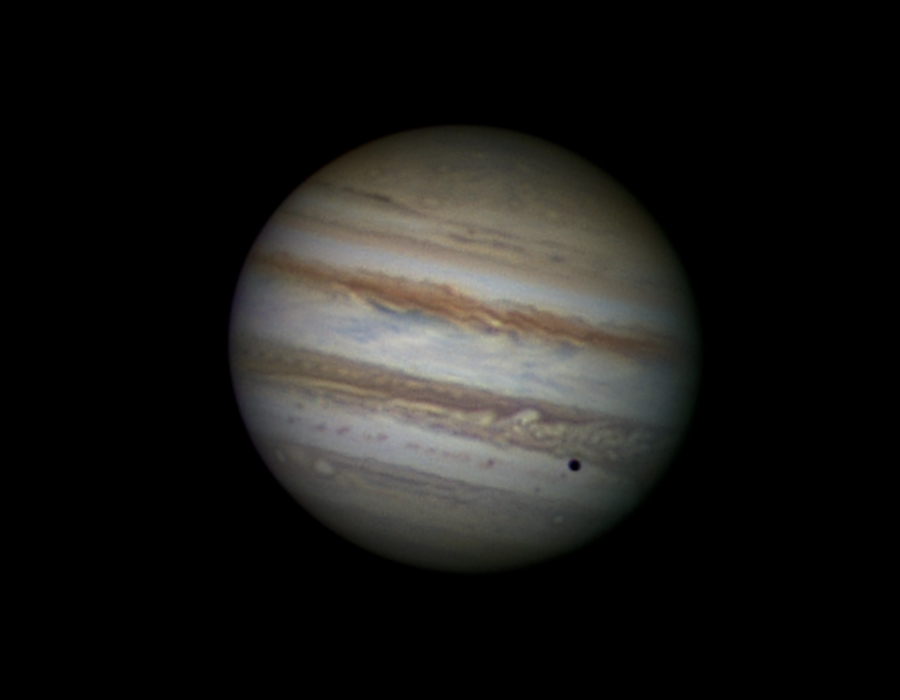
Best smart telescope
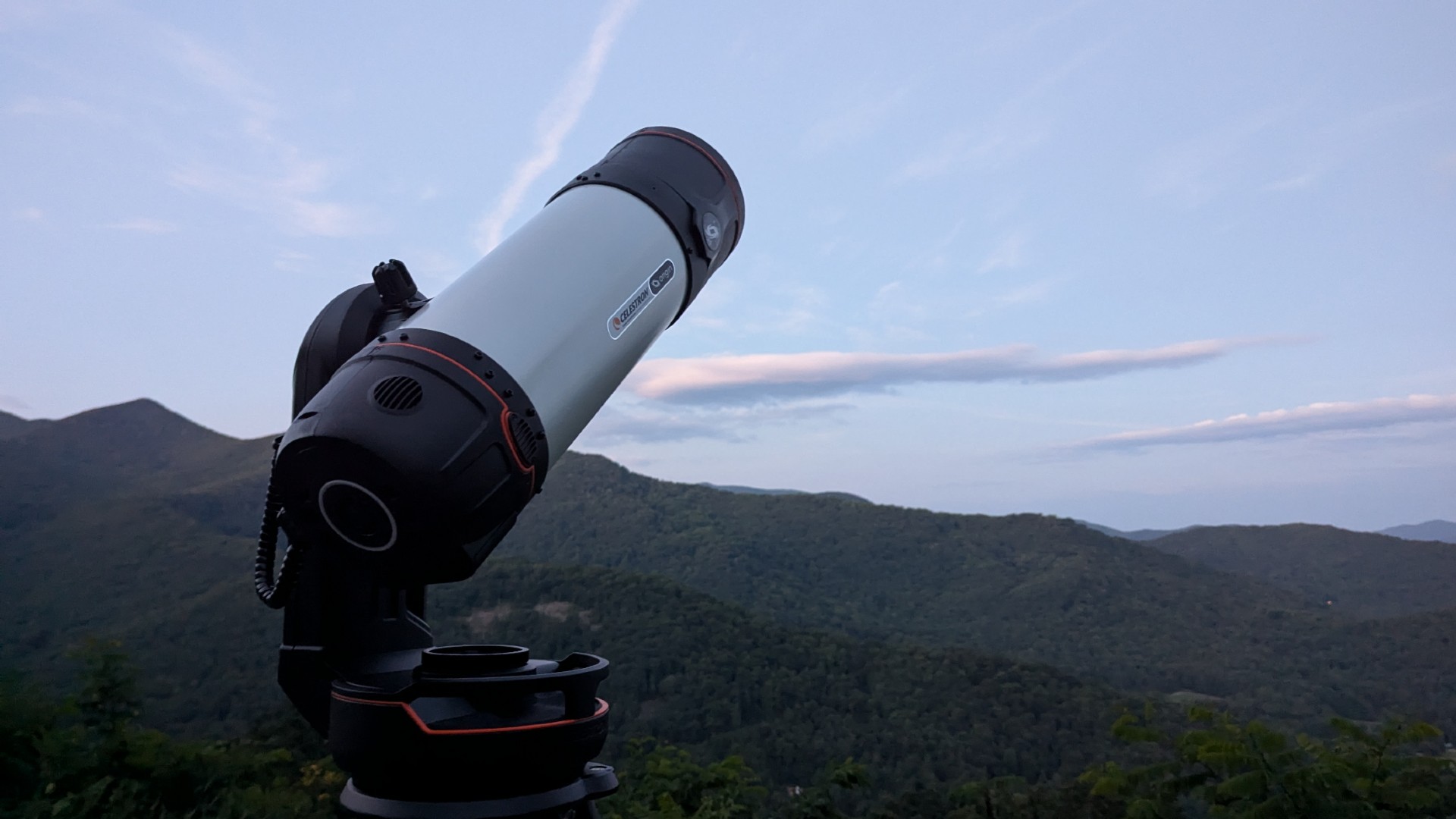
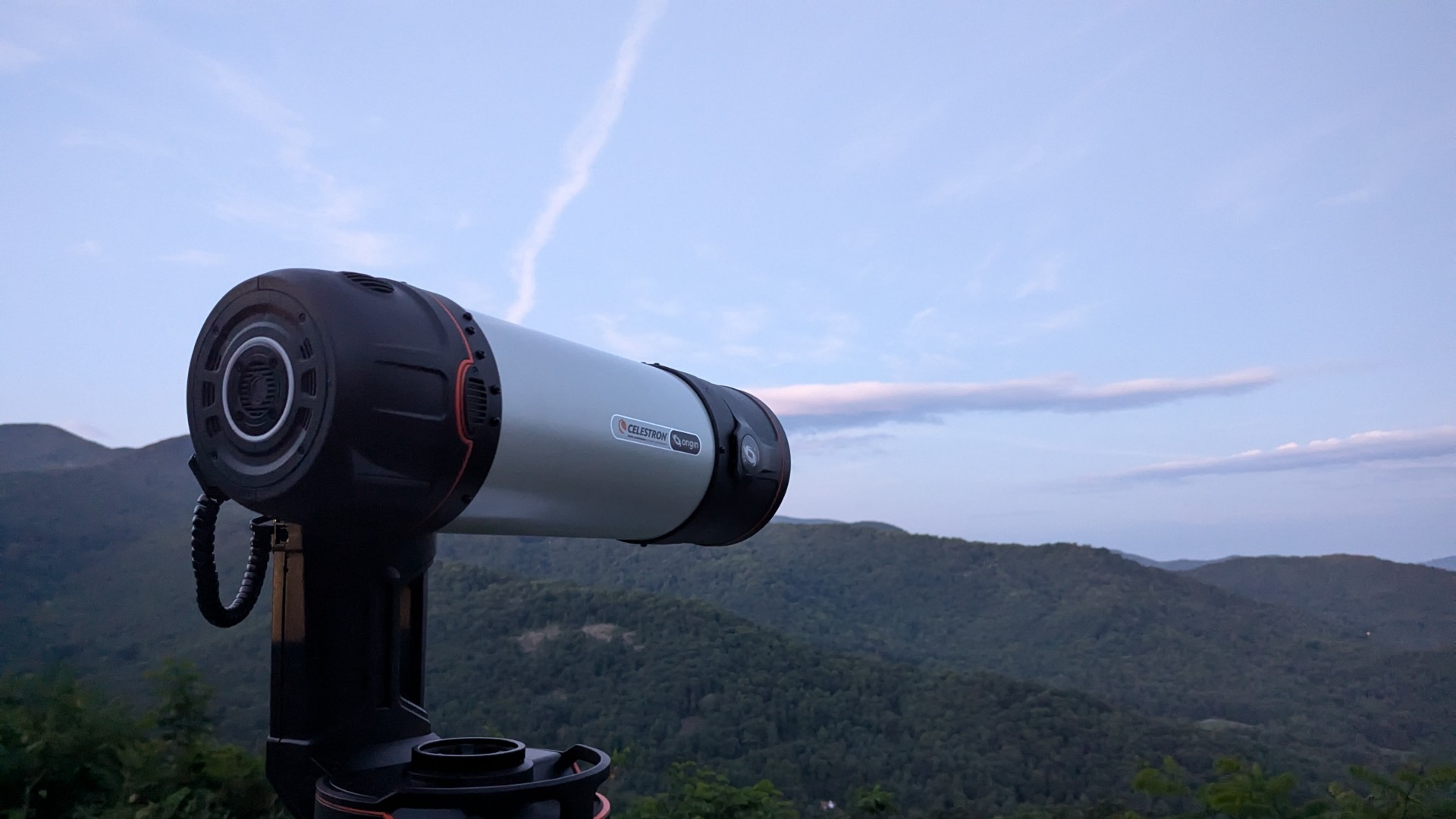
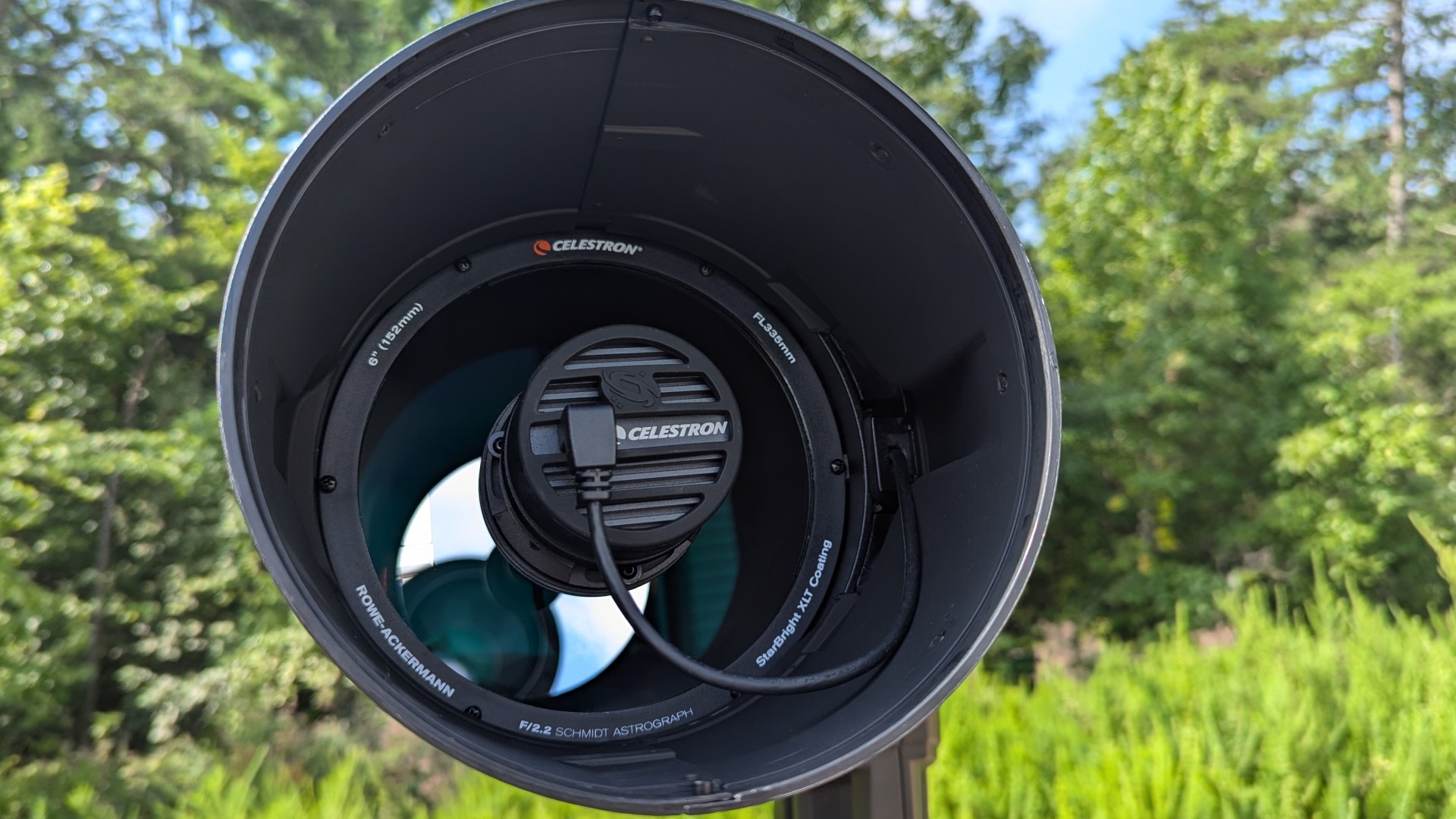
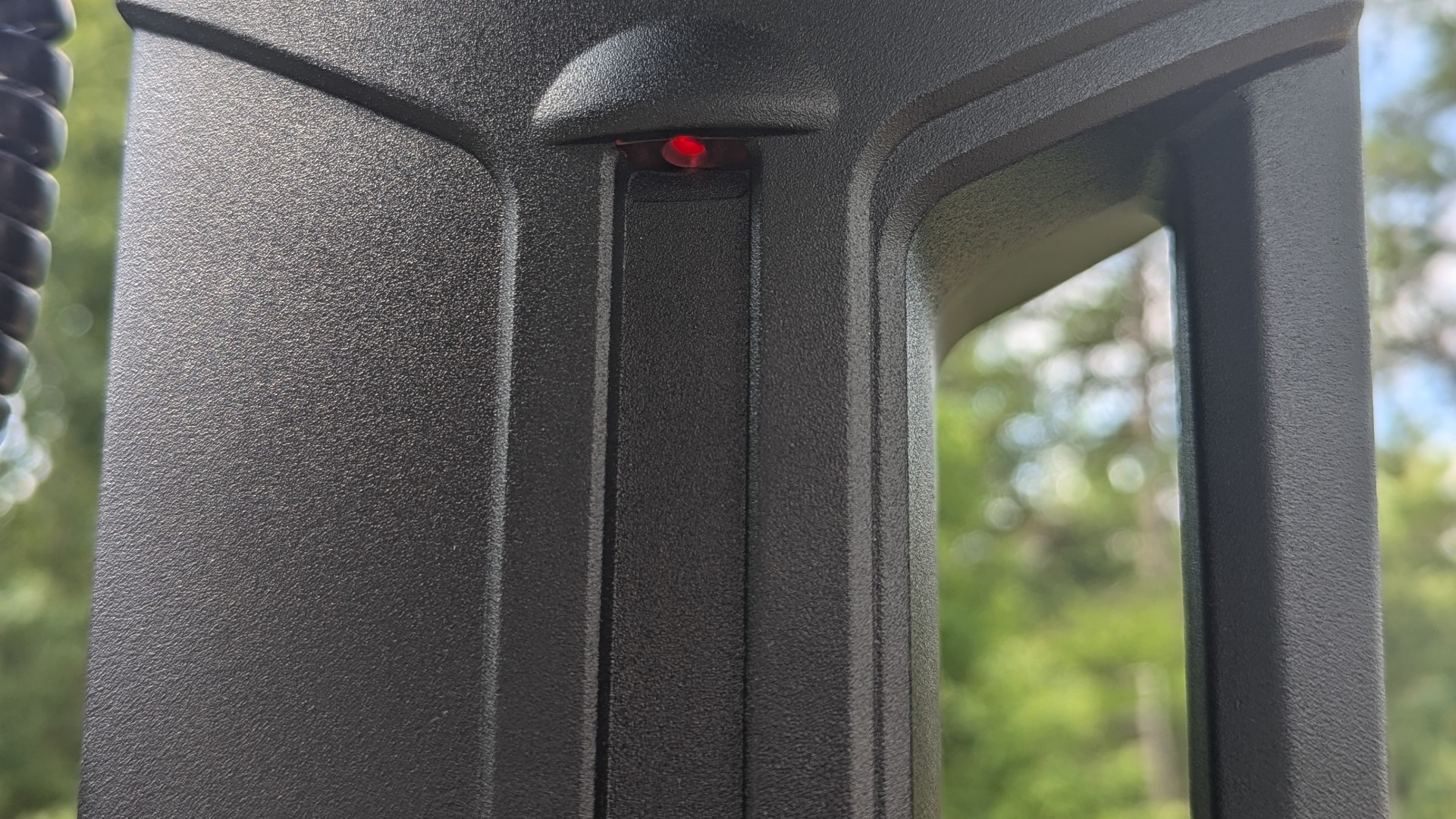
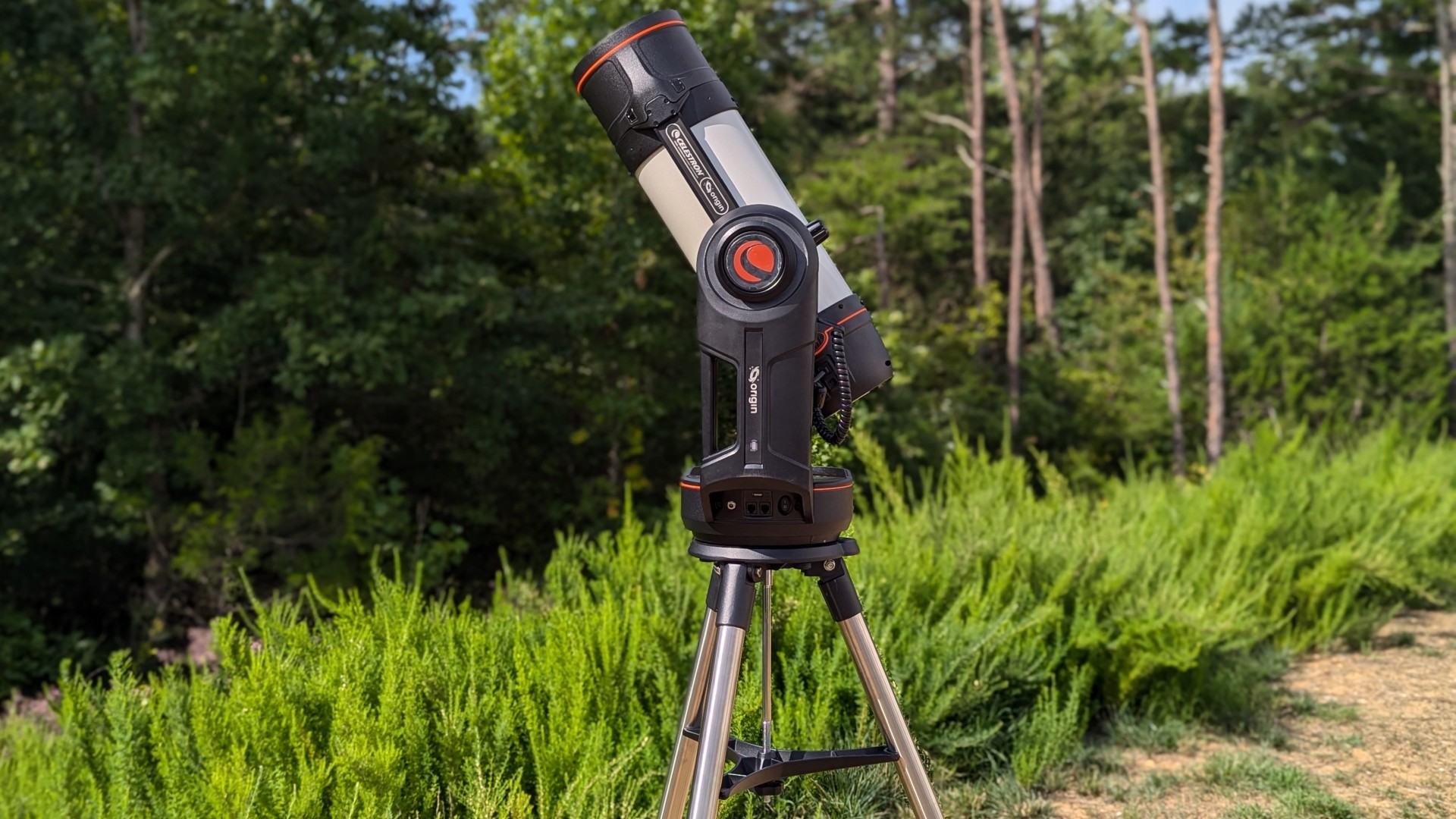
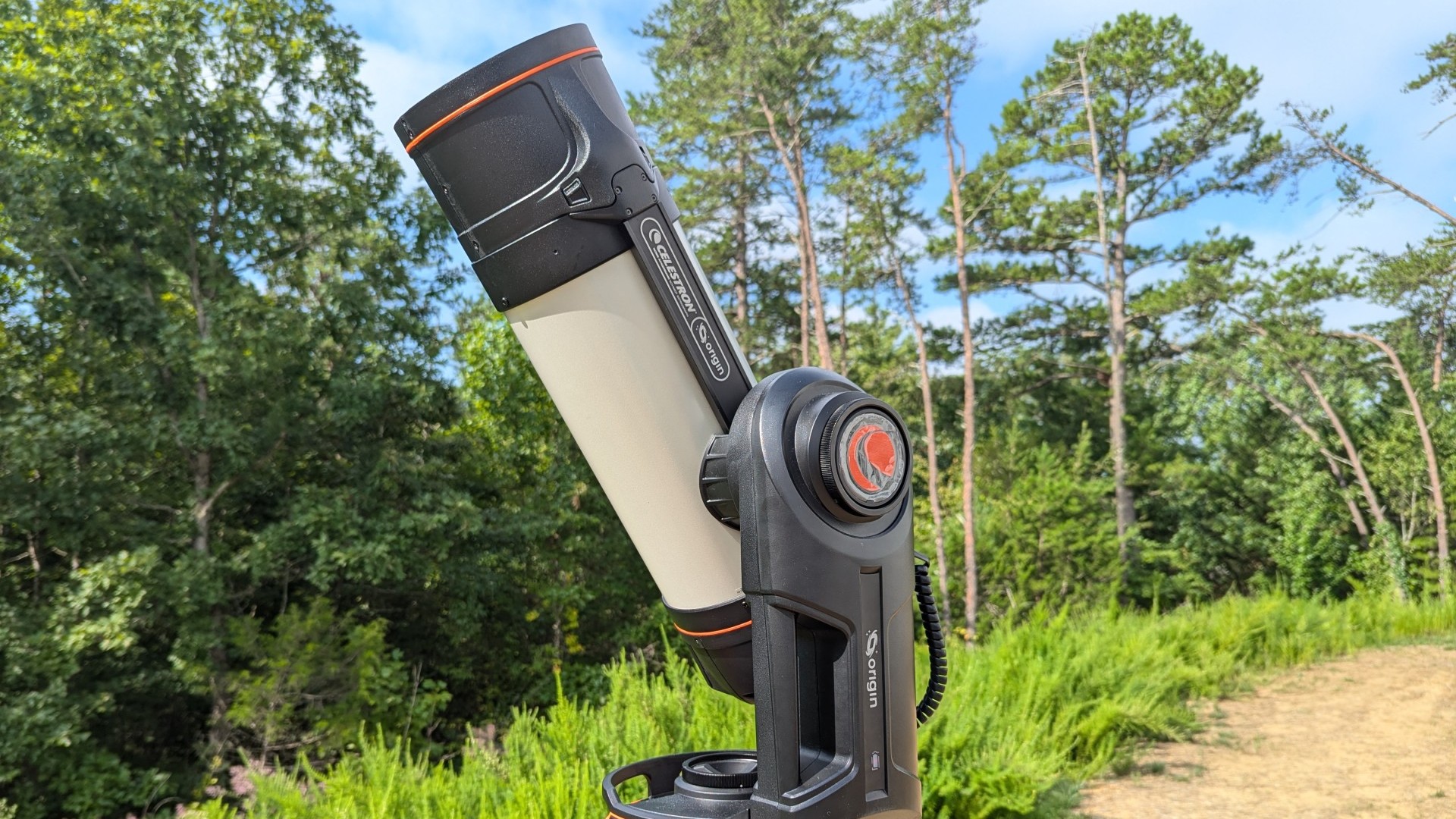
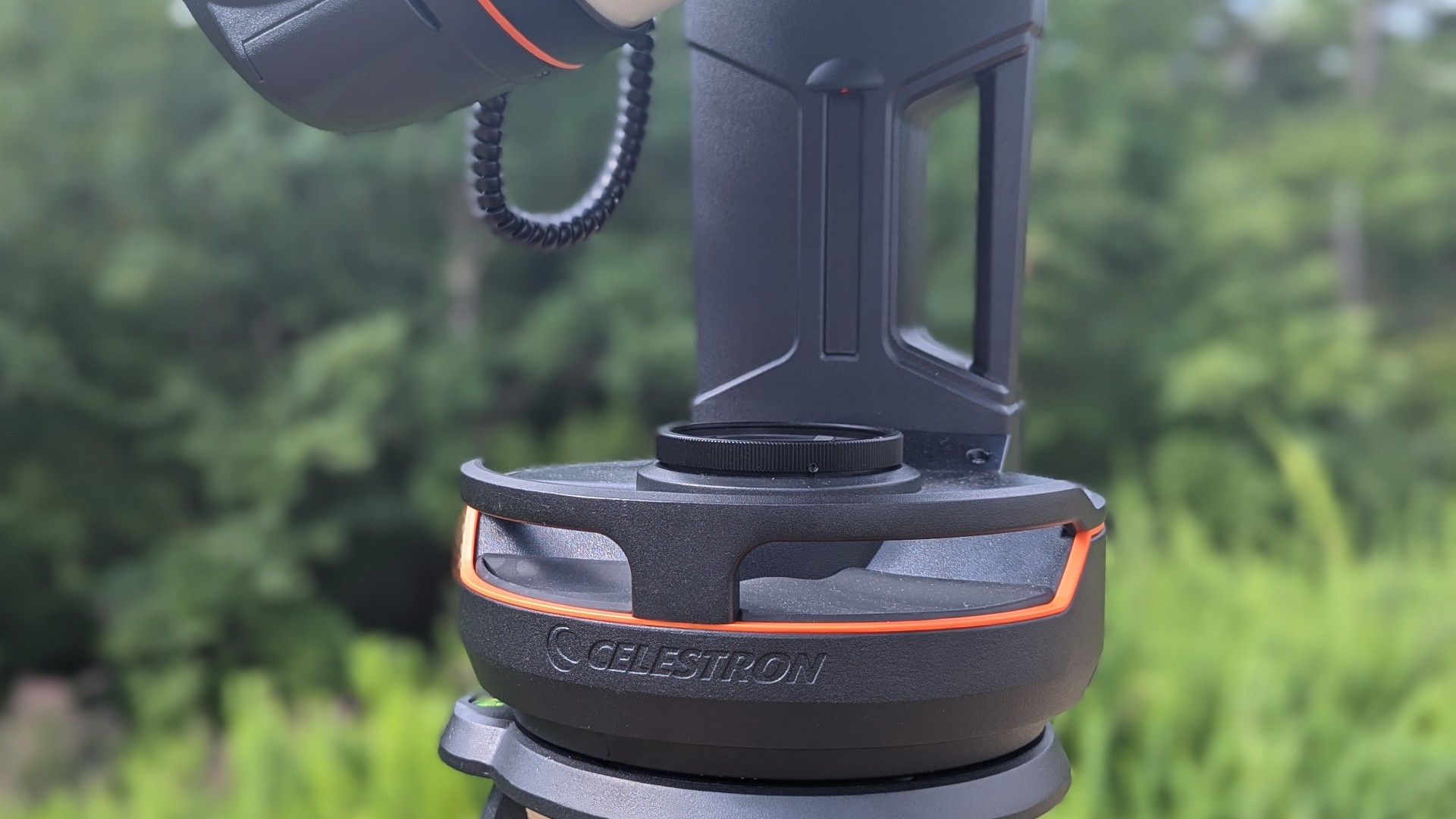
Celestron Origin Intelligent Home Observatory
Our expert review:
Specifications
Reasons to buy
Reasons to avoid
✅ You want an automated, user-friendly telescope for effortless deep-sky astrophotography.
✅ You prefer a smart system with app control and built-in image processing for quick results.
❌ You need a telescope for high-magnification planetary imaging or visual observing.
❌ You also want to have a telescope you can look through!
🔎 The Celestron Origin offers unmatched ease and speed for wide-field astrophotography, perfect for tech-savvy imagers. ★★★★★
The Celestron Origin Intelligent Home Observatory redefines astrophotography with its all-in-one design. Its 152mm Rowe-Ackermann Schmidt Astrograph (RASA) at f/2.2 captures vast swaths of the night sky, ideal for nebulas and galaxies.
The 335mm focal length ensures a wide field, perfect for large targets like the North America Nebula. Controlled via a smartphone app, it automates alignment, target selection, and image stacking, delivering polished results without manual tweaking. StarBright XLT coatings boost light transmission, yielding bright, detailed images in relatively short exposures.
At 41.6 pounds, it’s portable for a smart telescope, though its $3,999 price tag reflects its advanced tech. The alt-azimuth mount tracks smoothly for up to 30-minute exposures, but it’s not suited for high-magnification planetary work.
Users report setup times under 10 minutes, with the app guiding novices through the process. For those prioritizing convenience and speed, the Origin is a game-changer, though traditionalists may prefer more hands-on systems.
- Read our full Celestron Nexstar 8SE review
Attributes | Notes |
|---|---|
Design | Compact RASA with integrated camera and app-controlled mount. |
Performance | Fully automated imaging, app-driven, simplifies complex astrophotography tasks. |
Functionality | Fast f/2.2 optics excel at wide-field, deep-sky imaging. |
Best classic astro
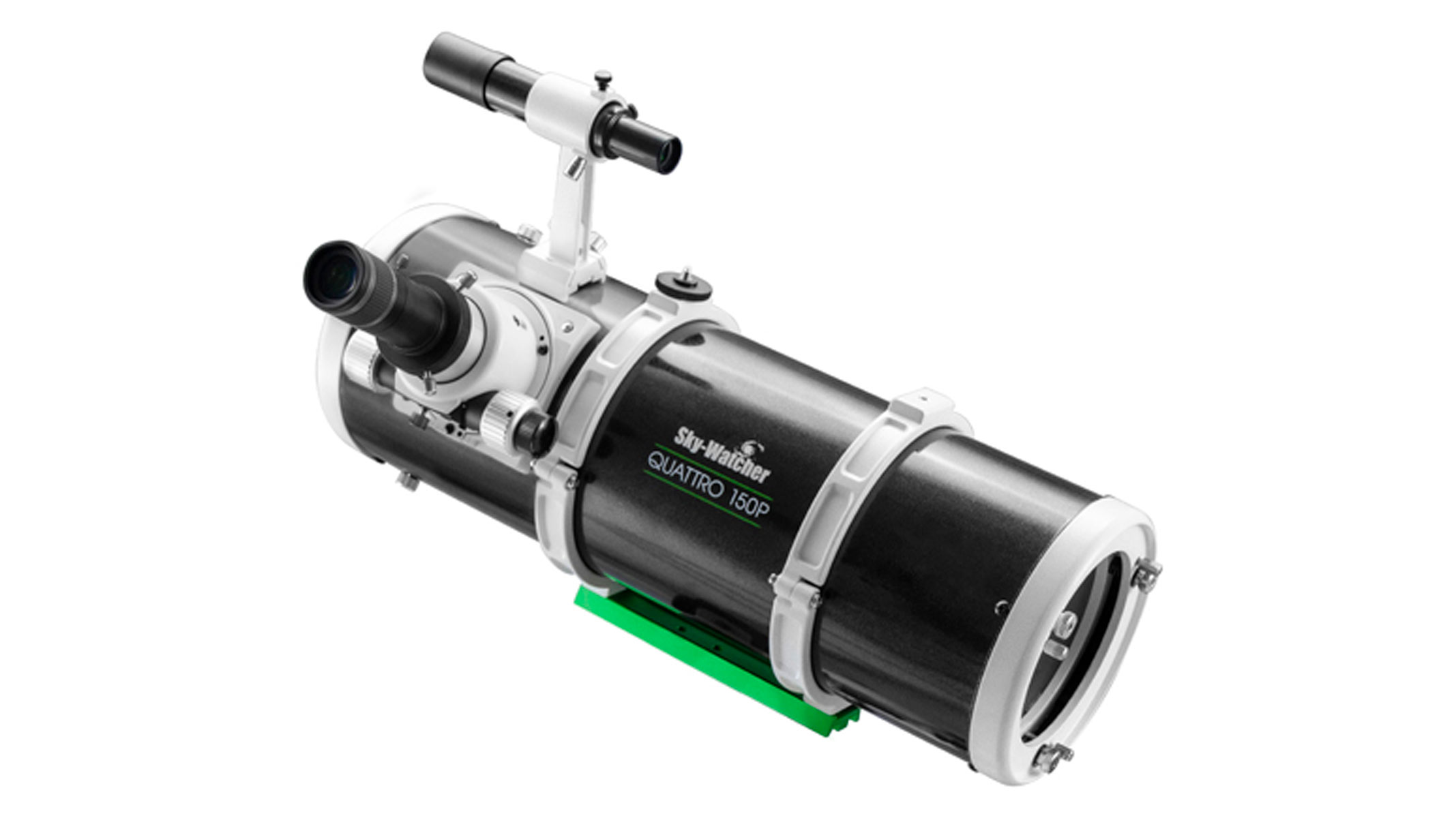
Sky-Watcher Quattro 150P
Our expert review:
Specifications
Reasons to buy
Reasons to avoid
✅ You want an affordable telescope for capturing wide-field deep sky images or brighter comets.
✅ You already own a sturdy equatorial mount and need a quality OTA for wide-field imaging.
❌ You need an all-in-one system with a mount included for immediate use.
❌ You’re focused on planetary imaging requiring longer focal lengths.
🔎 The Sky-Watcher Quattro 150P offers superb wide-field deep-sky imaging at a budget-friendly price.
The Sky-Watcher Quattro 150P is a favorite among budget-conscious astrophotographers for its super-fast f/4 optics with high-quality ED Coma Corrector and 150mm aperture, delivering bright, detailed images of nebulas and galaxies.
Its 600mm focal length provides a wide field, capturing large targets in a single frame. The included high-quality Coma Corrector gives sharp stars across wide fields and an even faster F/3.45 system.
Weighing just 12.6 pounds, it’s easy to transport, but as an optical tube assembly (OTA), it requires a separate equatorial mount, such as the Sky-Watcher EQ6-R, for tracking. The dual-speed focuser, while functional, may need upgrading for heavy imaging setups.
Users report excellent color correction and tight stars, with exposures as short as 30 seconds yielding impressive results. Setup is straightforward and its affordability—often under $500—makes it accessible, though beginners may need to invest in additional gear. For deep-sky enthusiasts, the Quattro 150P punches above its weight, rivaling pricier models.
Attributes | Notes |
|---|---|
Design | Lightweight Newtonian with fast f/4 optics with four element Coma Corrector. |
Performance | OTA-only, requires equatorial mount for tracking and imaging. |
Functionality | Bright, sharp images, ideal for wide-field deep-sky astrophotography. |
Best for planets
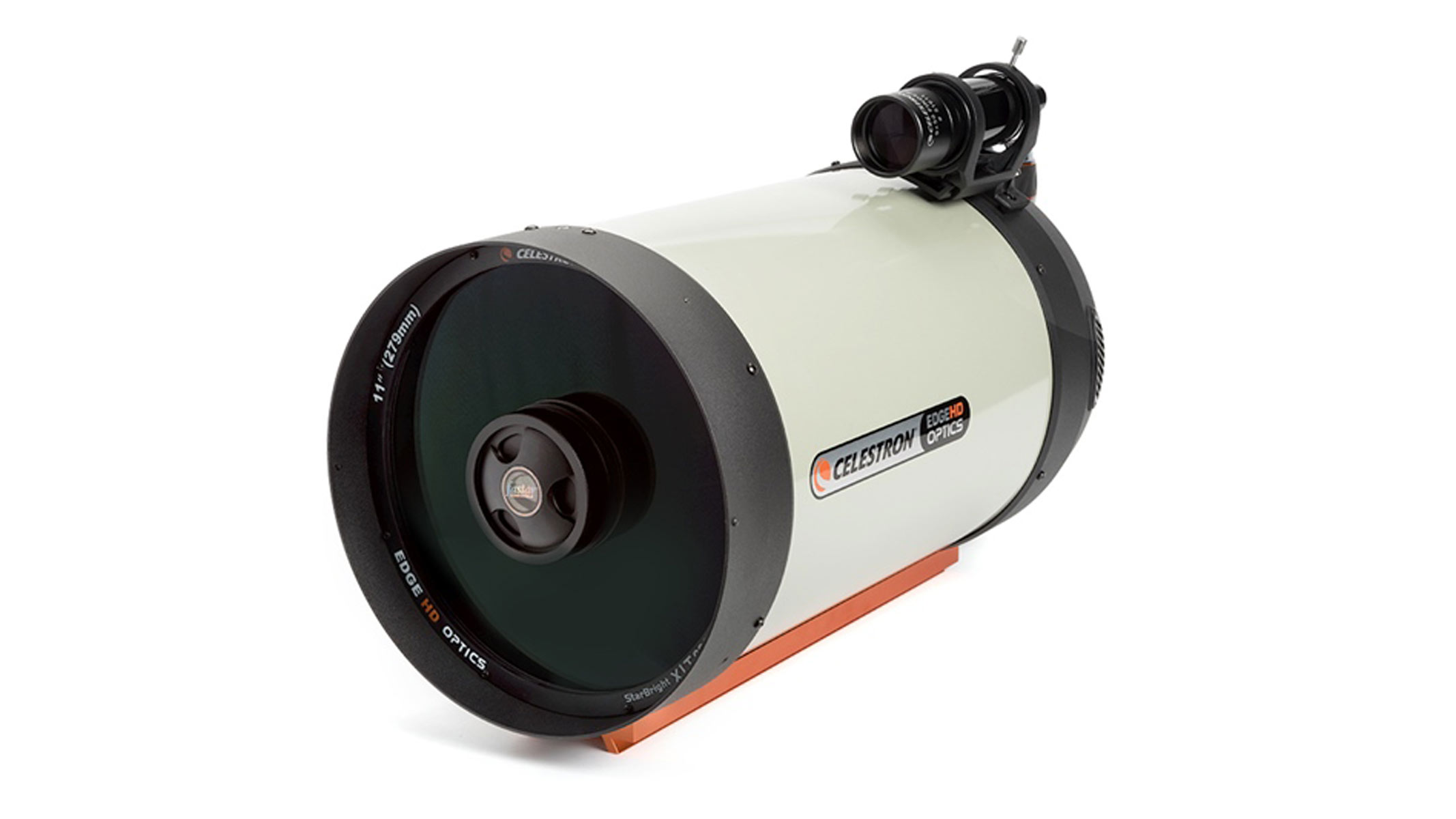
Celestron C11 EdgeHD
Our expert review:
Specifications
Reasons to buy
Reasons to avoid
✅ You want unparalleled detail in planetary and lunar astrophotography.
✅ You have a robust equatorial mount to support high-magnification imaging.
❌ Your budget is limited or you prioritize portability over aperture.
❌ You focus on wide-field deep-sky imaging rather than planetary work.
🔎 The Celestron C11 EdgeHD excels at capturing stunning planetary and lunar details.
The Celestron C11 EdgeHD is a planetary imaging titan, boasting a large 280mm aperture and 2800mm focal length for jaw-dropping detail within Jupiter’s belts, Saturn’s rings, and lunar craters. Its f/10 focal ratio delivers high magnification, while StarBright XLT coatings maximize light transmission for crisp, vibrant images.
The aplanatic Schmidt-Cassegrain design ensures a flat field, free of coma or curvature, ideal for larger sensors. At 28 pounds, it’s hefty, requiring a robust mount like the Celestron CGX for stable tracking during long exposures.
Fastar compatibility allows f/2 imaging with an optional lens system, adding versatility. Users report setup times of 15-20 minutes, with precise focusing critical for planetary work. Priced around $4,000, it’s a premium OTA, but its light-gathering power—four times that of a 5-inch scope—makes it unmatched for small, bright targets.
Beginners may find its cost and weight prohibitive, but for dedicated planetary imagers, the C11 EdgeHD is a dream instrument that will provide a lifetime of enjoyment.
Attributes | Notes |
|---|---|
Design | Large Schmidt-Cassegrain with flat-field EdgeHD optics. |
Performance | OTA-only, supports Fastar for versatile focal ratios. |
Functionality | Exceptional clarity and detail for planetary and lunar imaging. |
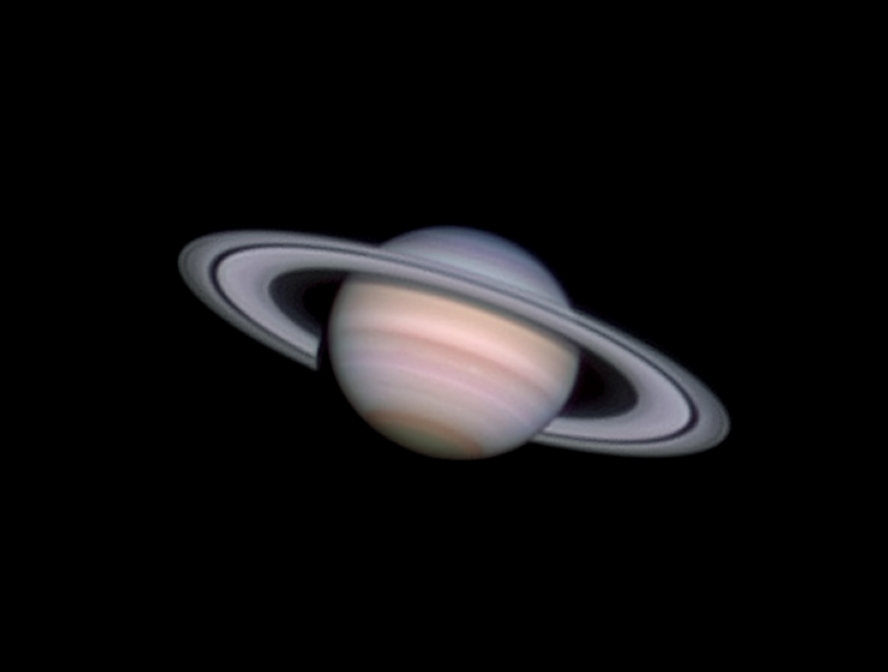
Best for nebulas
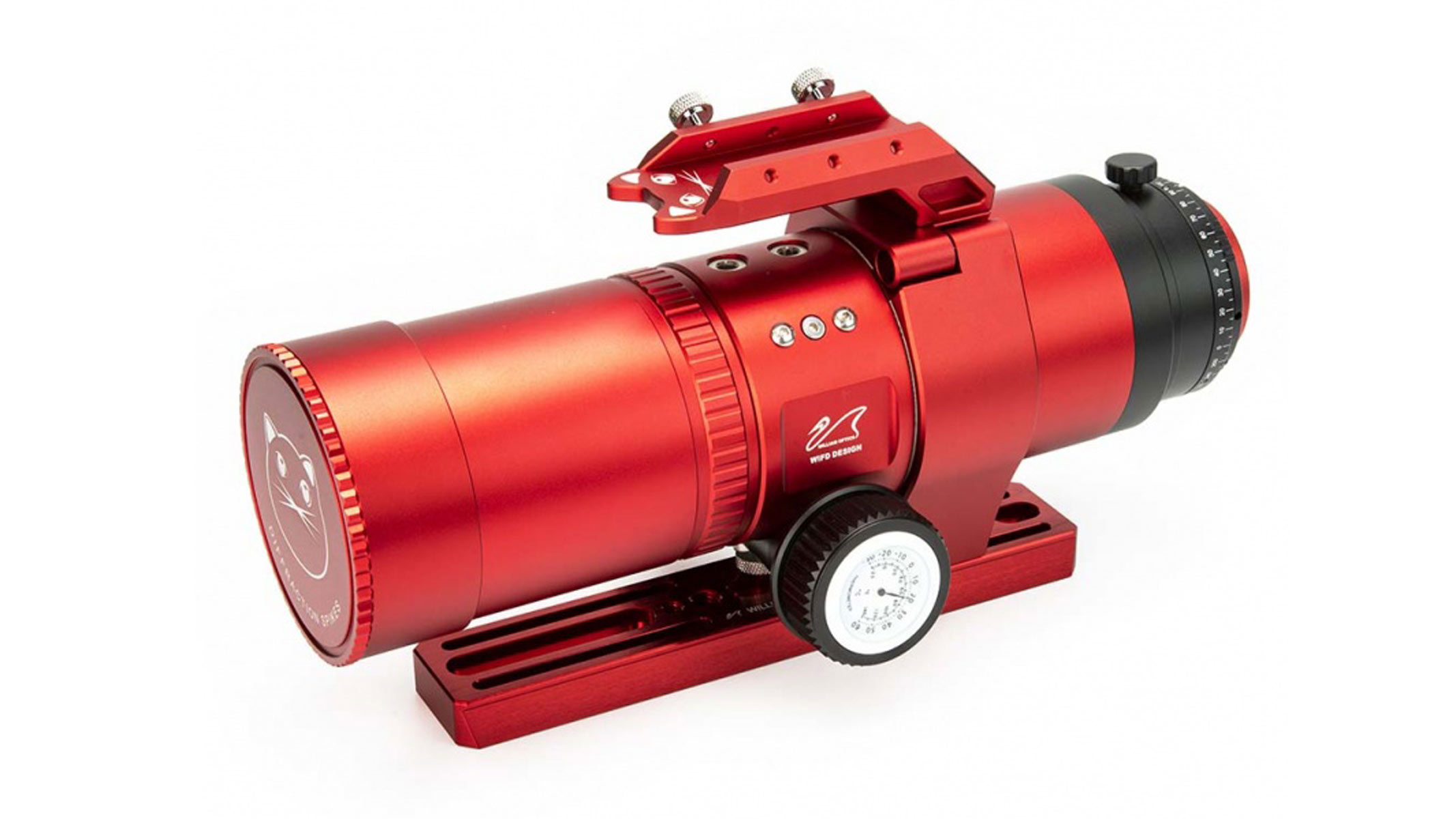
William Optics RedCat 51
Our expert review:
Specifications
Reasons to buy
Reasons to avoid
✅ You want a super portable refractor for capturing large fields of view with excellent cross-field sharpness.
✅ You prioritize sharp, color-corrected images for wide-field deep-sky astrophotography.
❌ You need a larger aperture for more detailed imaging applications.
❌ You want to take high resolution images of the moon and planets.
🔎 The William Optics RedCat 51 delivers stunning wide-field deep sky images with superb portability.
The William Optics RedCat 51 is a compact apochromatic refractor designed for wide-field astrophotography, excelling at capturing sprawling nebulas like the Veil or North America Nebula. Its 51mm f/4.9 Petzval lens, with a 250mm focal length, produces sharp, color-corrected images across a 45mm image circle, compatible with full-frame sensors.
Top-quality optics eliminate chromatic aberration, delivering pinpoint stars and vibrant colors. At just 3.9 pounds, it pairs well with lightweight mounts like the Sky-Watcher Star Adventurer, making it ideal for travel. The internal focus design (WIFD) ensures smooth, sag-free focusing, even with heavy cameras. Priced around $1,500, it’s a premium choice, but users rave about its no-fuss setup and exceptional sharpness.
The small aperture does limit light-gathering for faint objects somewhat, requiring longer exposures for pleasing results. For astrophotographers chasing wide-field masterpieces, the RedCat 51’s portability and optical quality are hard to beat, though it’s less well suited for planetary or high-magnification work.
Attributes | Notes |
|---|---|
Design | Compact Petzval refractor with internal focus mechanism. |
Performance | OTA-only, ideal for lightweight mounts and travel. |
Functionality | Sharp, color-corrected images for wide-field nebula photography. |
Best for smartphone astrophotography
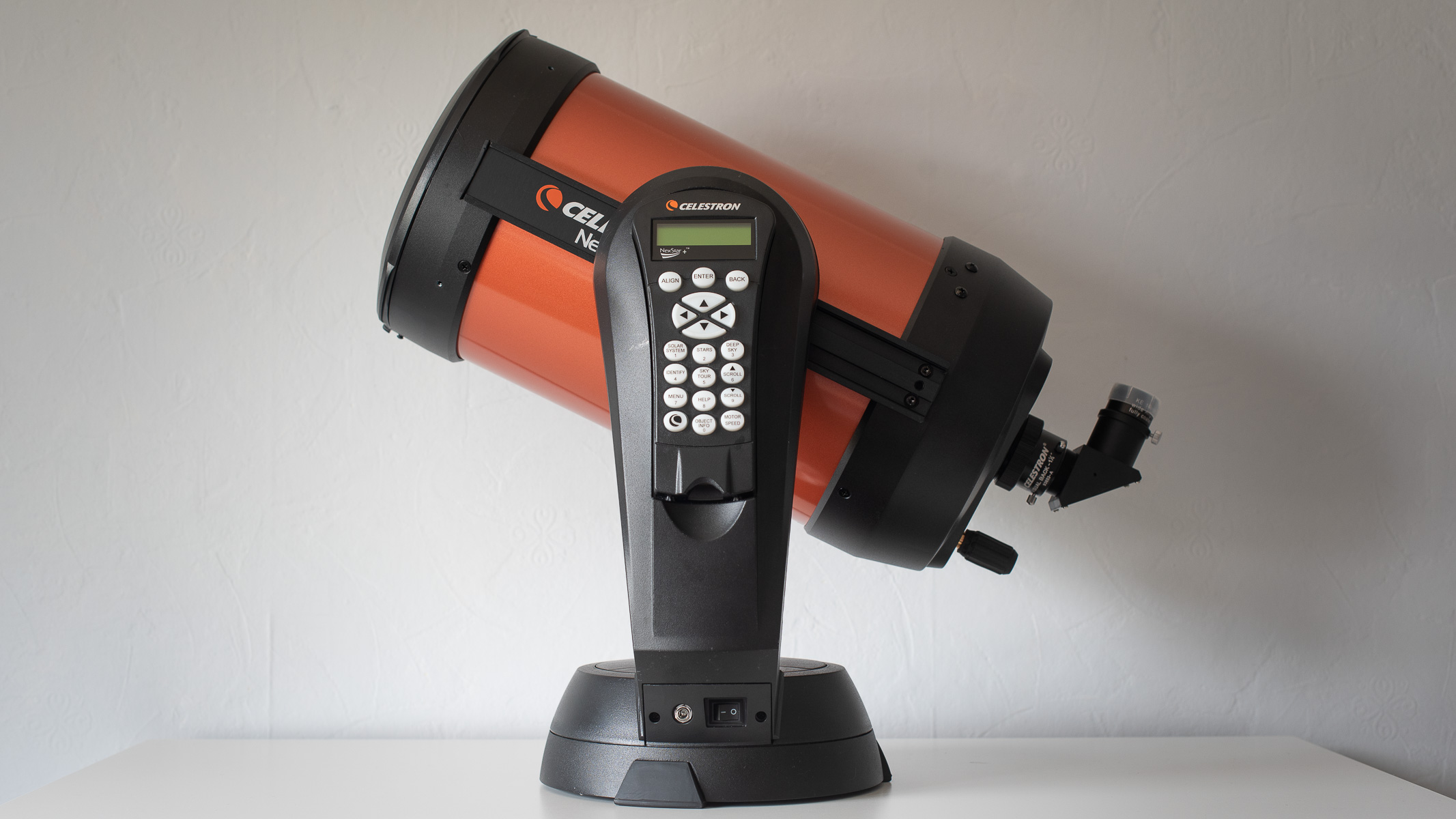
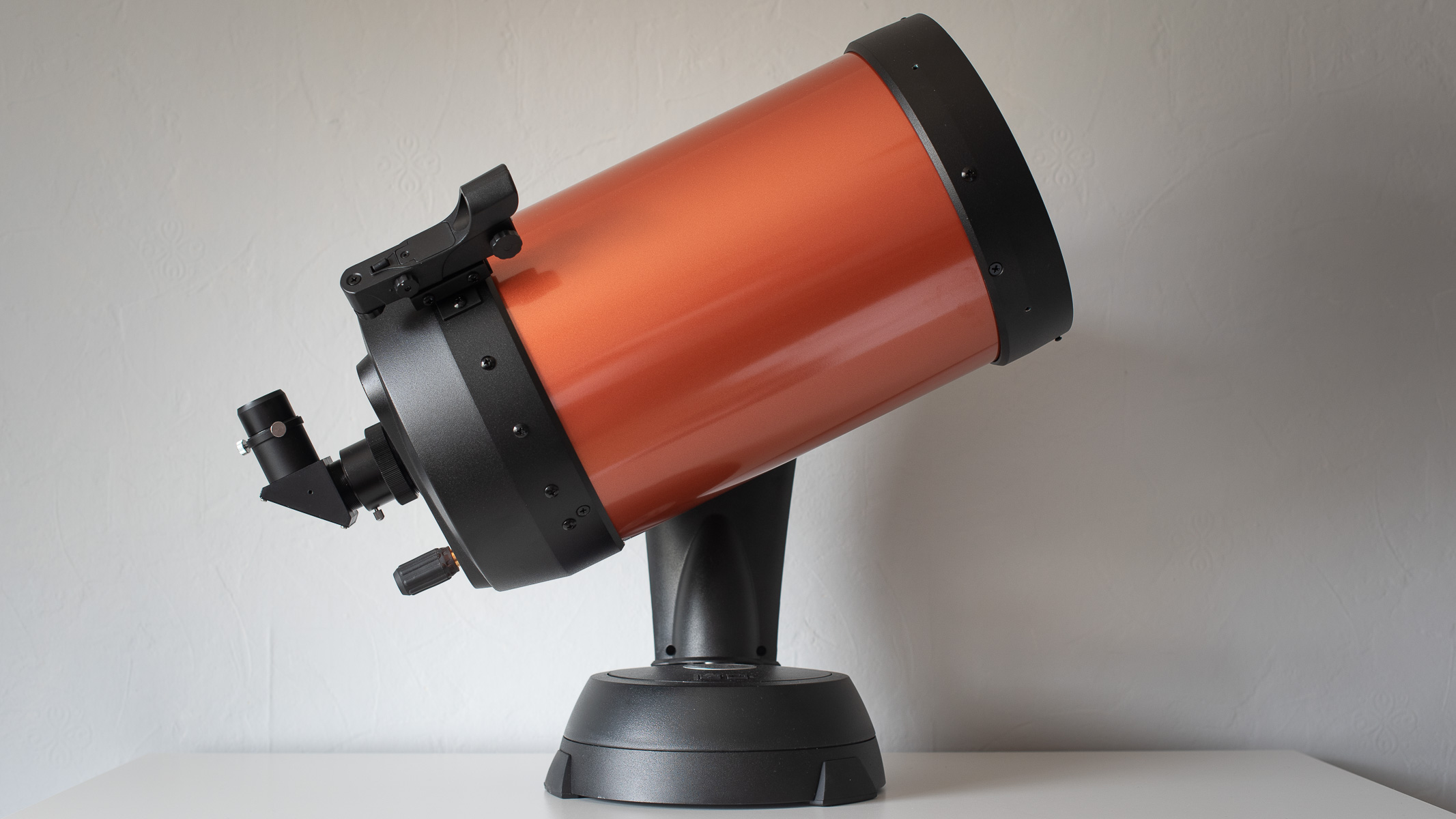
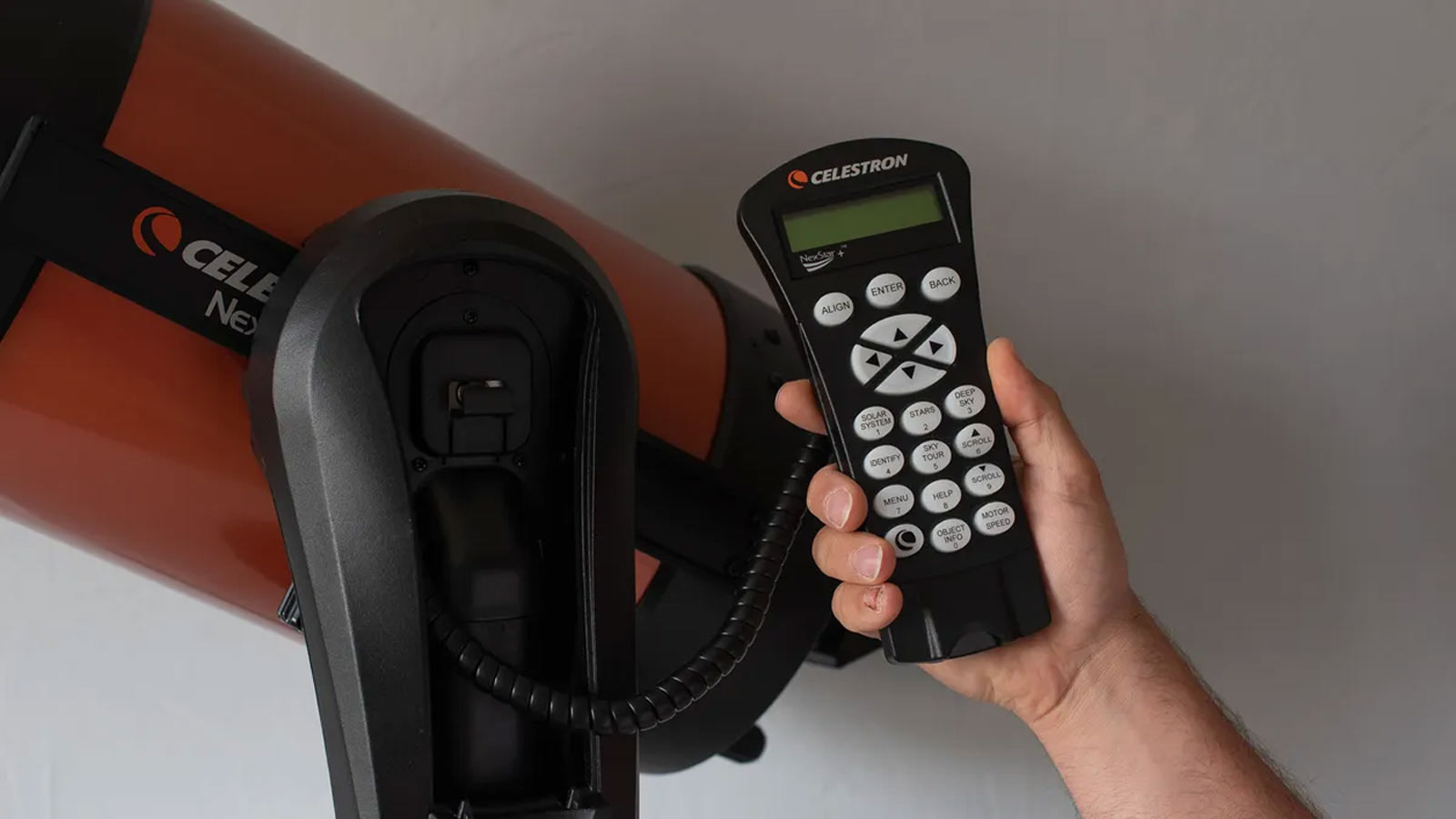
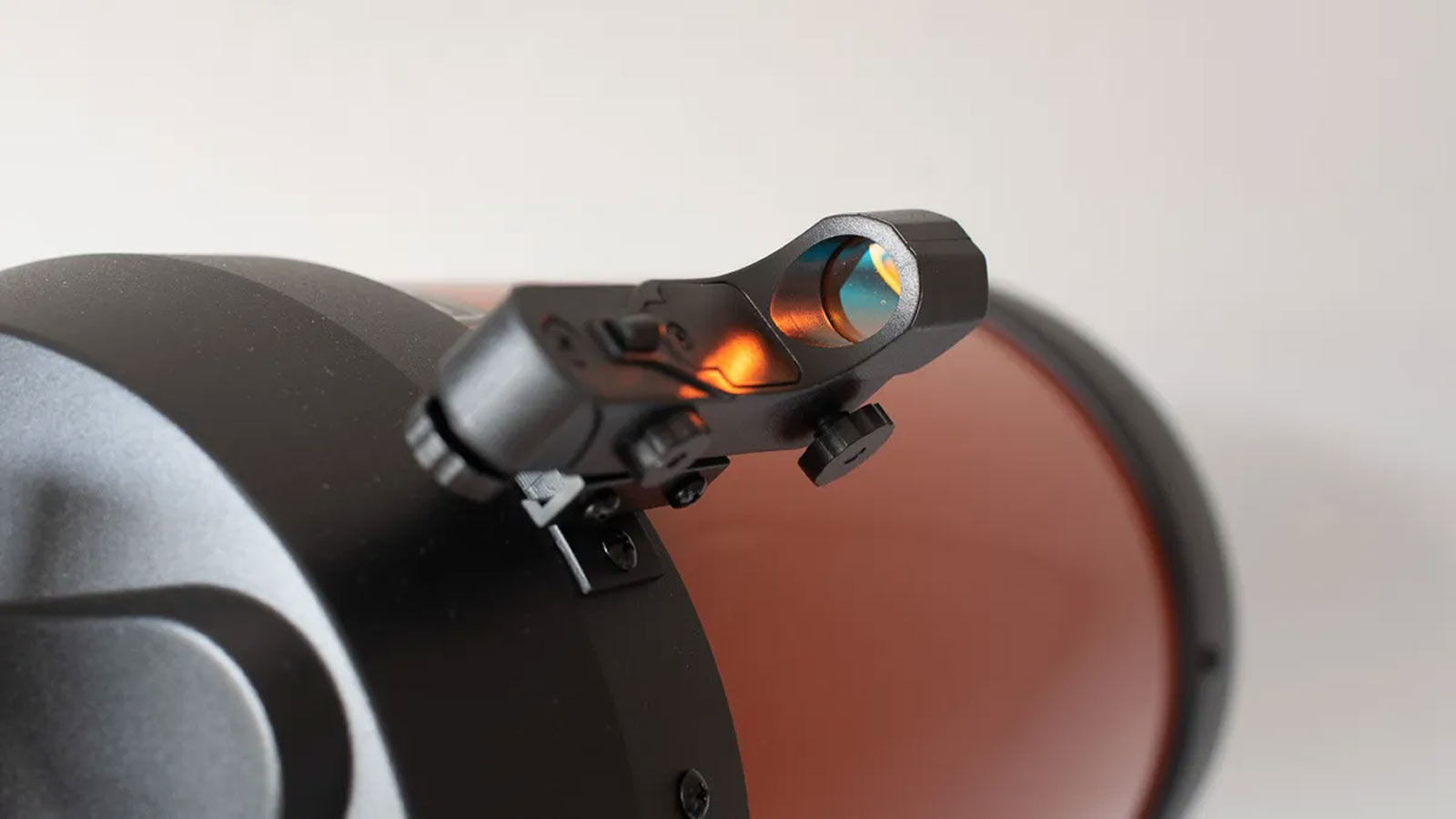
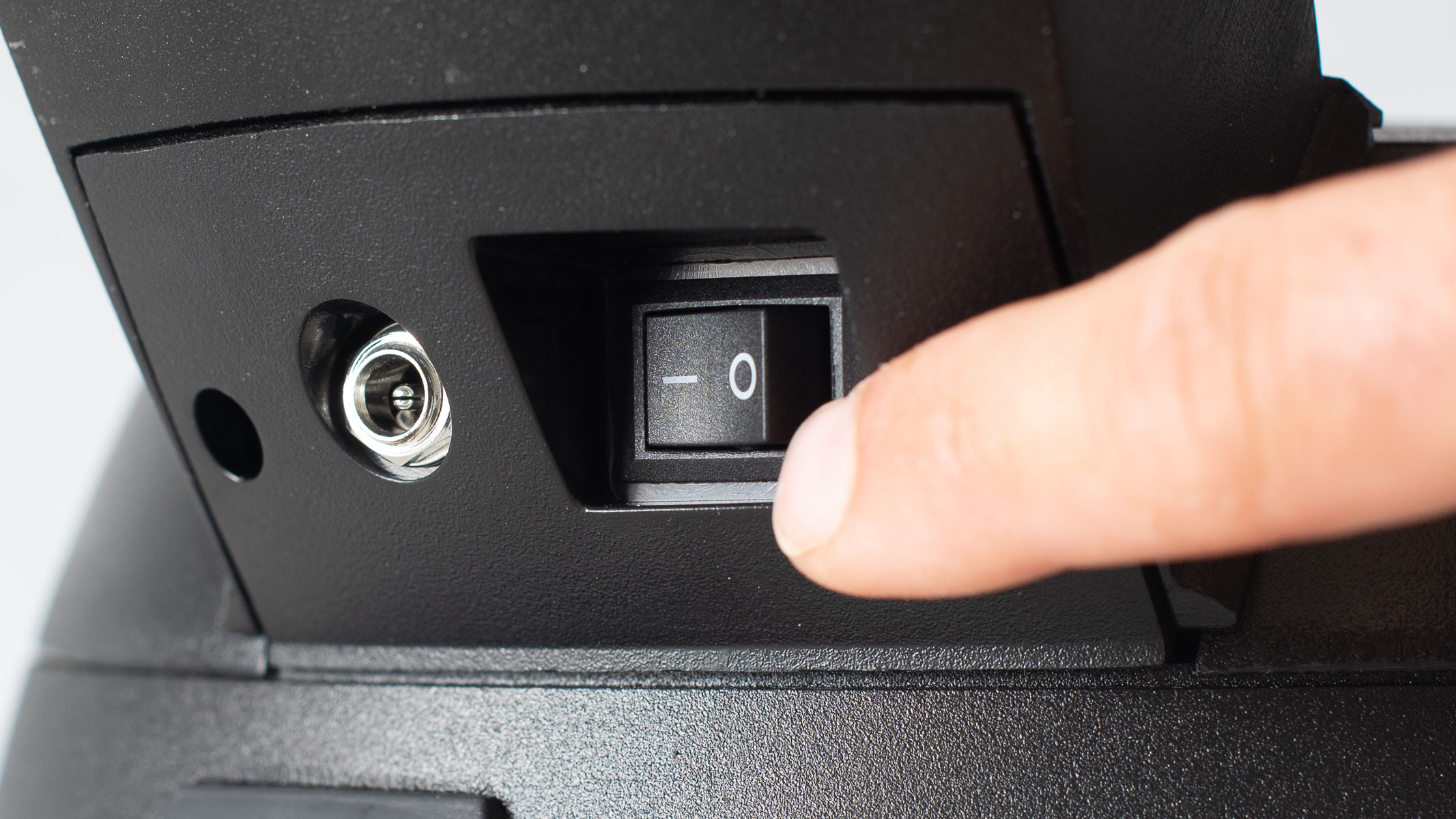
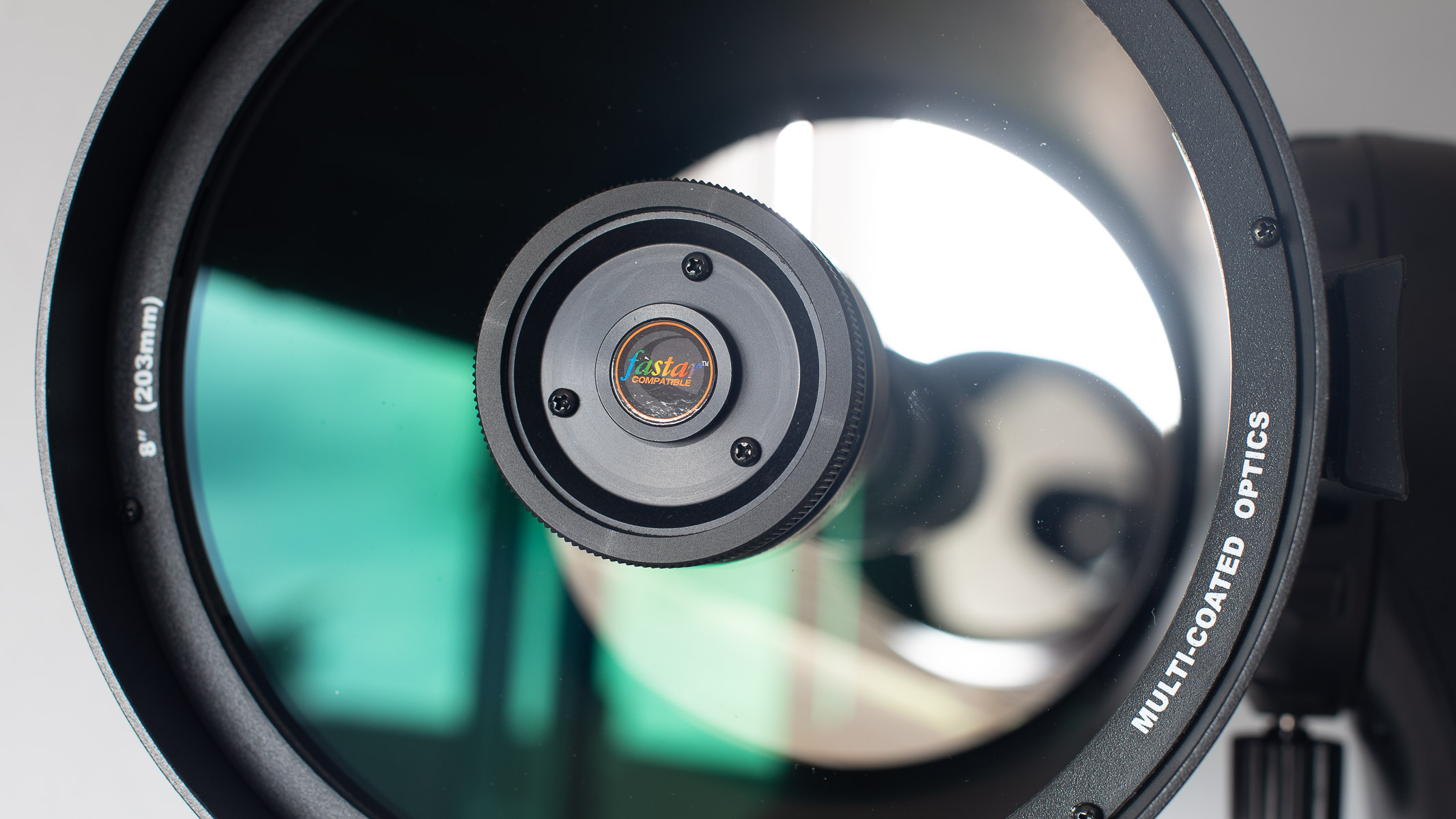
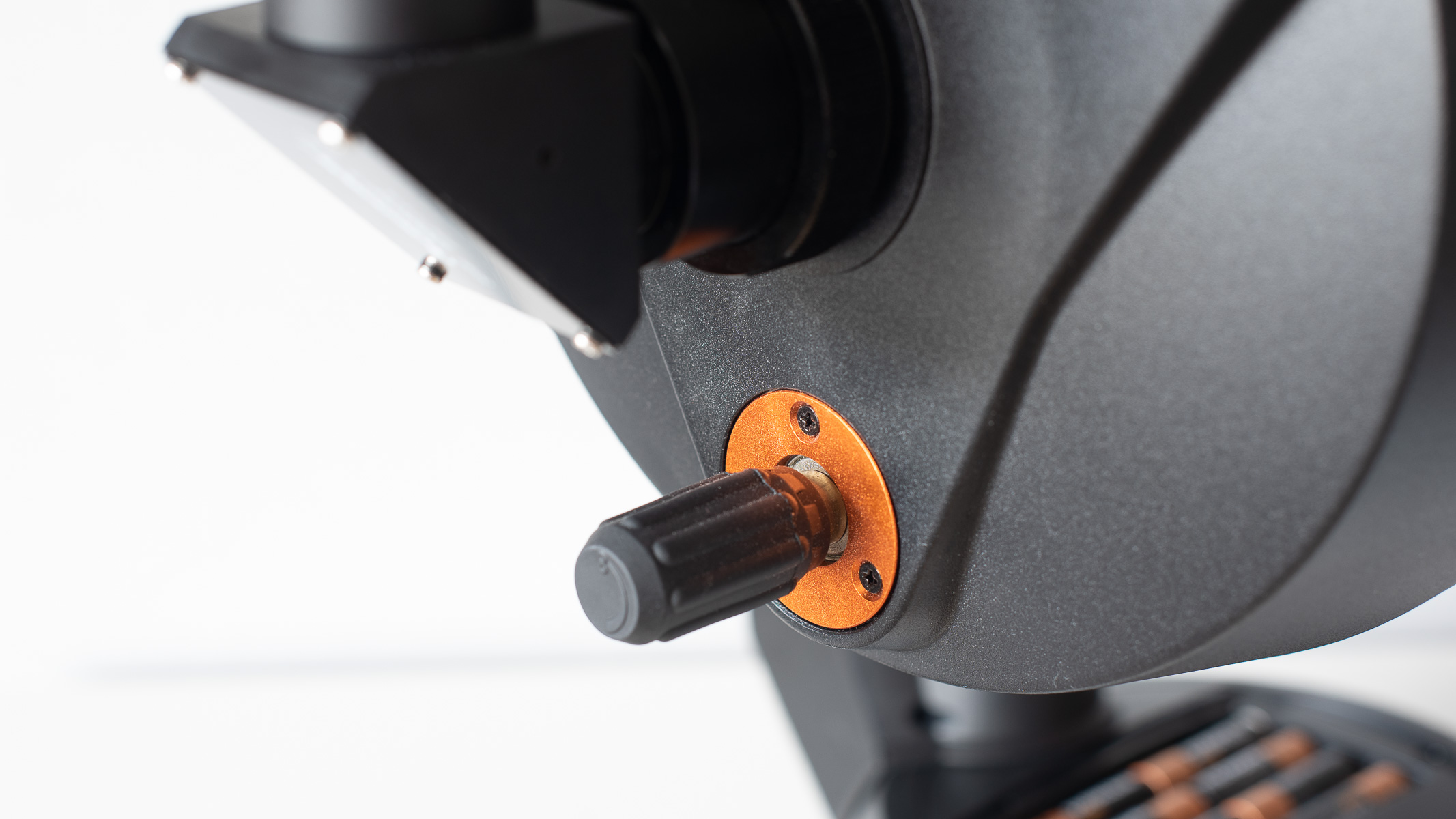
Celestron NexStar 8SE
Our expert review:
Specifications
Reasons to buy
Reasons to avoid
✅ You want an easy-to-use telescope for smartphone astrophotography.
✅ You’re a beginner seeking a computerized system with good quality pointing and tracking.
❌ You need an equatorial mount for long-exposure deep-sky astrophotography.
❌ You prefer a super lightweight setup for frequent transport to dark-sky locations.
🔎 The Celestron NexStar 8SE simplifies smartphone astrophotography with large aperture and advanced easy to use features.
The Celestron NexStar 8SE is a beginner-friendly telescope optimized for smartphone astrophotography, particularly for bright targets like the moon and planets. Its 203.2mm aperture and 2032mm focal length at f/10 deliver detailed, high-magnification images, enhanced by StarBright XLT coatings for 97.4% light transmission.
The computerized alt-azimuth mount, with a 40,000-object database and SkyAlign technology, locates targets in seconds. Pair it with the Celestron NexYZ smartphone adapter for easy smartphone astro-shots, though the alt-az mount limits deep-sky exposures without a wedge.
At 33 pounds, it’s portable but requires eight AA batteries, lasting around 2-4 hours, or an optional power tank. Users praise its sharp images and ease of use, with Jupiter’s belts and Saturn’s rings easily captured.
Priced around $1,600, it’s a solid investment for casual imagers, but serious deep-sky photographers may need an equatorial mount.
- Read our full Celestron NexStar 8SE review
Attributes | Notes |
|---|---|
Design | Compact Schmidt-Cassegrain with user-friendly GoTo mount. |
Performance | SkyAlign and smartphone compatibility simplify targeting and imaging. |
Functionality | Bright, detailed planetary images, though somewhat limited for long-exposure deep-sky work. |
Best for stars
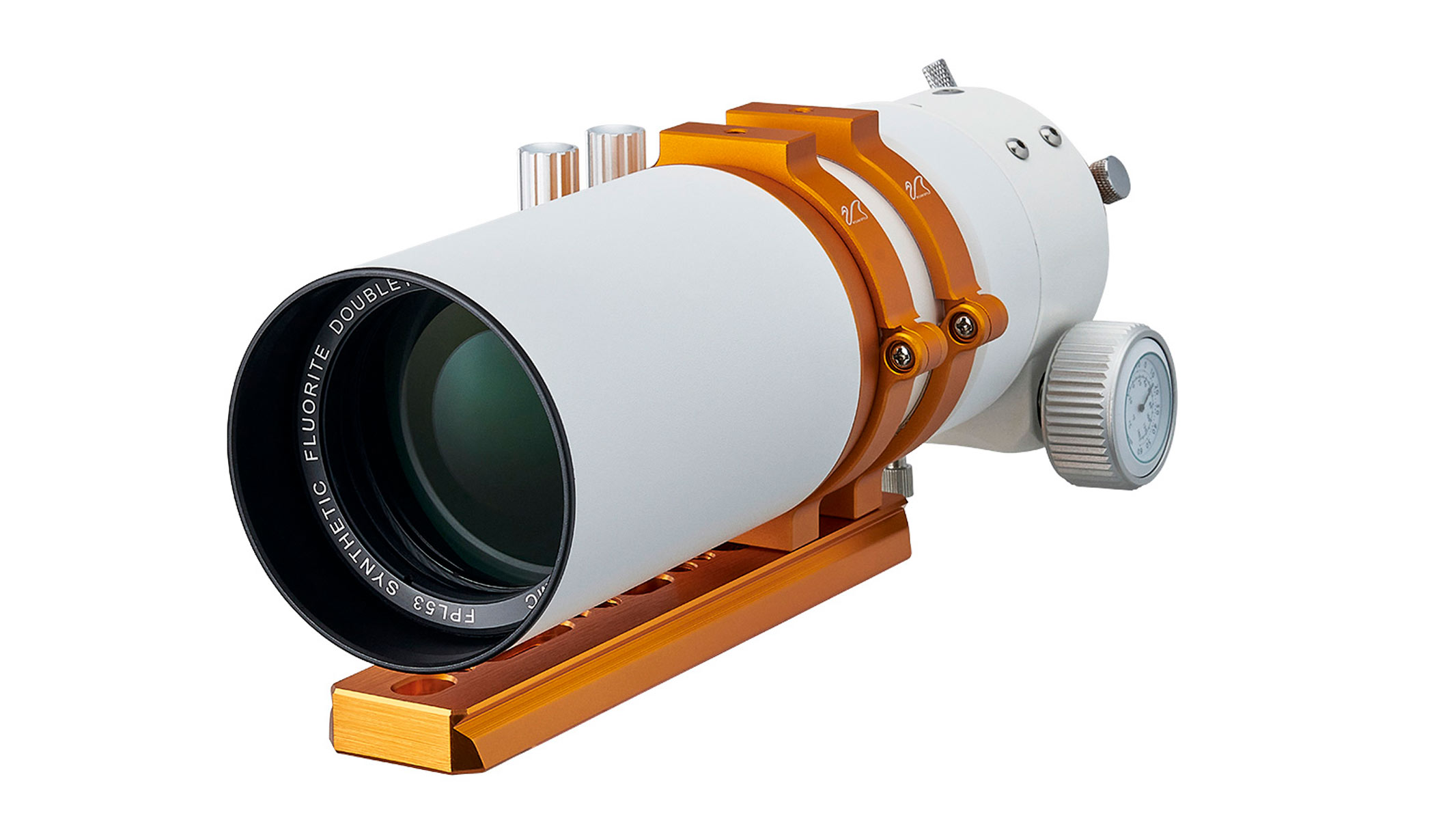
William Optics ZenithStar 73
Our expert review:
Specifications
Reasons to buy
Reasons to avoid
✅ You want sharp, vibrant images of star clusters and wide-field deep-sky objects.
✅ You need a portable refractor for travel-friendly astrophotography with small mounts.
❌ You prioritize large apertures for capturing faint, distant galaxies or fine planetary detail.
❌ You need an all-in-one system with a mount included for immediate use.
🔎 The William Optics ZenithStar 73 excels at sharp, colorful star cluster imaging.
The William Optics ZenithStar 73 is a high-performance apochromatic refractor tailored for astrophotographers chasing sharp, colorful star clusters and wide-field targets. Its 73mm aperture and 430mm focal length at f/5.9, paired with a Flat 73A field flattener, deliver pinpoint stars across a wide field, ideal for objects like the Pleiades or Andromeda Galaxy.
Fully multi-coated optics ensure excellent color correction, eliminating chromatic aberration for vibrant images. At 5.5 pounds, it’s perfect for portable mounts like the Sky-Watcher HEQ5, with setup taking under 10 minutes. Priced around $1,000, it’s a mid-range investment, but users laud its crisp, flat-field images, even with short exposures.
The moderate aperture limits light-gathering/resolution for faint galaxies or planetary details. Its compact design suits travel, but it’s an OTA-only purchase, so a mount is needed.
For star-focused astrophotographers, the ZenithStar 73 offers premium optics in a lightweight package, though it’s less suited for high-magnification planetary work.
Attributes | Notes |
|---|---|
Design | Compact apochromatic refractor with field flattener for sharp imaging. |
Performance | OTA-only, pairs well with lightweight equatorial mounts. |
Functionality | Vibrant, sharp star images, excellent for clusters and wide fields. |
Best telescopes for astrophotography
Telescope | Aperture | Focal length | Focal Ratio | Mount type | Weight | Optical design |
|---|---|---|---|---|---|---|
Celestron Advanced VX 8” EdgeHD | 203.2mm | 2032mm | f/10 | Equatorial | 47 lbs | Schmidt-Cassegrain |
Celestron Origin | 152mm | 335mm | f/2.2 | Alt-Azimuth | 41.6 lbs | RASA |
Sky-Watcher Quattro 150P | 150mm | 600mm | f/4 | None (OTA) None (OTA) | 12.6 lbs | Newtonian Reflector |
Celestron C11 EdgeHD | 280mm | 2800mm | f/10 | Equatorial | 28 lbs | Schmidt-Cassegrain |
William Optics RedCat 51 | 51mm | 250mm | f/4.9 | None (OTA) | 3.9 lbs | Apochromatic Refractor |
Celestron NexStar 8SE | 203.2mm | 2032mm | f/10 | Alt-Azimuth | 33 lbs | Schmidt-Cassegrain |
William Optics ZenithStar 73 | 73mm | 430mm | f/5.9 | None (OTA) | 5.5 lbs | Apochromatic Refractor |
The best telescopes for astrophotography frequently asked questions
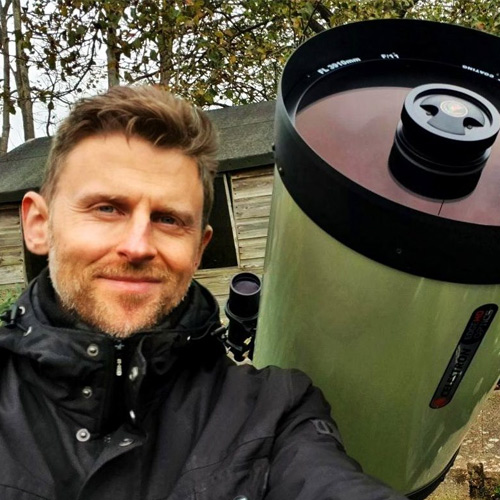
Damian A. Peach FRAS is a renowned British amateur astronomer, astrophotographer, lecturer, and author with a career in astronomy spanning over thirty years. In recognition of his significant contributions to amateur astronomy, the International Astronomical Union (IAU) renamed asteroid 27632 as Damianpeach.
In 2011 he was Overall Winner of the Royal Greenwich Observatories Astronomy Photographer of the Year competition. He was elected a fellow of the Royal Astronomical Society in 2012. In 2018, he joined the scientific committee of the Aster Academy and received the Astronomical League's Peltier Award for his work.
Additionally, in 2022, the Société Astronomique de France (SAF) honored him with the Julien Saget Prize for his contributions to astronomy.
When is Amazon Prime Day Big Deals Days in October?
Tuesday Oct. 7 and Wednesday Oct. 8, ending at midnight. The best deals were posted in our Prime Day hub. We will do similar for November's Black Friday.
What makes a telescope good for astrophotography?
In general, good optical and mechanical quality and ease of use take priority. Luckily today we are spoilt for choice and there are many telescopes available for almost every interest and experience level.
Do I need an equatorial mount for astrophotography?
Equatorial mounts are required for long-exposure astrophotography, as they align with Earth’s rotation for accurate tracking. Alt-azimuth mounts work for shorter exposures or planetary imaging but limit deep-sky results.
Can beginners use these telescopes?
Absolutely! Models like the Celestron NexStar 8SE and Origin are very beginner-friendly with automated features. More advanced systems like the C11 EdgeHD require more experience to get the most out of these systems.
How important is aperture in astrophotography?
Aperture determines light-gathering power, critical for faint objects like galaxies and resolution of planetary detail. Larger apertures (e.g., 280mm in the C11 EdgeHD) capture more light, improving detail and brightness in images.
Can I use these telescopes for visual observing?
Most, like the NexStar 8SE and Advanced VX 8” EdgeHD, excel at both imaging and visual observing. Refractors like the RedCat 51 are optimized for imaging but less suited for visual use. Most Smart Telescopes like the Celestron Origin are imaging only.
How we test
Our telescope evaluations combine hands-on testing, online research, and expert level experience. We assess key features like aperture, focal ratio, mount stability, and optical quality to give a well-rounded view. The author’s extensive use of countless different telescopes including some of the models in this review also helps forms our insights. We also analyze user reviews from various platforms and retail sites to gauge real-world user experience. This rigorous approach ensures our recommendations meet diverse needs, from beginners to advanced imagers.
Breaking space news, the latest updates on rocket launches, skywatching events and more!
Damian A. Peach FRAS is a British amateur astronomer, astrophotographer, lecturer and author. Best known for his photographs of a wide variety of astronomical objects. His career in the field spans over thirty years.
Peach's passion for Astronomy first began in 1988 inspired by books in his school library. Later he joined the British Astronomical Association (BAA) in 1996 and since then has contributed large amounts of observations to the various observing sections and also written and co-authored many papers in the organization's journal. He was awarded the organization's prestigious Merlin Medal in 2006. The same year he was also awarded the Association of Lunar and Planetary Observers (ALPO) Walter H. Haas award for his contributions.
Peach has provided astronomical images for magazines and books throughout his career. His images have been featured in Astronomy Magazine, Sky & Telescope, Astronomy Now & The Sky at Night. He has also authored articles on astrophotography for these magazines. Peach has also been a co-author on several professional scientific papers on planetary astronomy, especially regarding work on Mars and Jupiter. He was one of only a few amateur astronomers to have work featured as part of the national Explorers of the Universe exhibition at the Royal Albert Hall in 2007. His work has also appeared at the Edinburgh Science Festival, and The Royal Greenwich Observatory.
Peach's work has also been used by NASA and ESA to illustrate what ground-based telescopes can achieve in photographing the planets, and the support they can provide to professional space probe missions.
